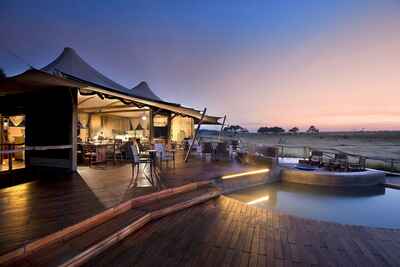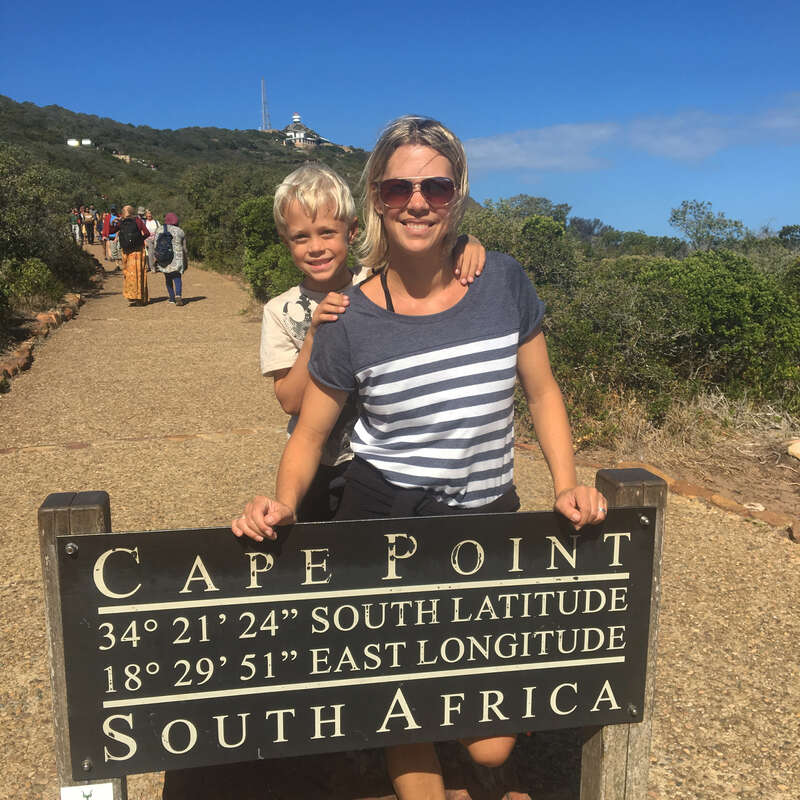About Somalisa Camp
Set beneath a grove of acacia trees in a private concession on the eastern side of Zimbabwe’s Hwange National ...
... Park, Somalisa Camp underwent a complete rebuild in 2015. Gone is the simple, rustic property, to be replaced by a smart new set up with a much more luxurious style. The camp is fronted by an ancient dried-up watercourse known as the Sumamalisa Vlei, and this, along with the attendant waterhole, provides a great place to view the large herds of elephants for which Hwange is famous.
The new Somalisa has a much more luxurious style than its predecessor, with comfortable furnishings and top service. Yet although the transformation has been substantial, much of the original character of the camp has been maintained. If you are looking for a classy tented camp with excellent wildlife watching opportunities and superb guiding, then Somalisa would be a great choice.
Our view
The new Somalisa has a much more luxurious style than its predecessor, with comfortable furnishings and top service. Yet although the transformation has been substantial, much of the original character of the camp has been maintained. If you are looking for a classy tented camp with excellent wildlife watching opportunities and superb guiding, then Somalisa would be a great choice.
Accommodation
7 tented rooms
Children
Best for 16+
Open
All year
Activities

4WD Safari

Birdwatching

Guided walking safari

Night drive

Private activities
Traveller reviews of Somalisa Camp
40 real, un-edited reviews from Expert Africa's travellers.
Arrived 7 Apr 2025, 4 nights
"Somalisa Camp review"
Overall rating: Excellent
Arrived 11 Sep 2024, 4 nights
"Somalisa Camp review"
Overall rating: Excellent
Arrived 17 Jul 2024, 3 nights
"Somalisa Camp review"
Overall rating: Excellent
Arrived 8 May 2024, 3 nights
"Somalisa Camp review"
Overall rating: Excellent
Arrived 17 Sep 2022, 3 nights
"Somalisa Camp review"
Overall rating: Excellent
Arrived 17 Sep 2022, 3 nights
"Somalisa Camp review"
Overall rating: Excellent
Arrived 13 Sep 2022, 3 nights
"Somalisa Camp review"
Overall rating: Excellent
Arrived 13 Nov 2019, 3 nights
"Somalisa Camp [11-2019]"
Overall rating: Excellent
Arrived 25 Sep 2019, 2 nights
"Luxury, tented camp in great location."
Overall rating: Excellent
Arrived 24 Sep 2019, 4 nights
"Wonderful experience"
Overall rating: Excellent
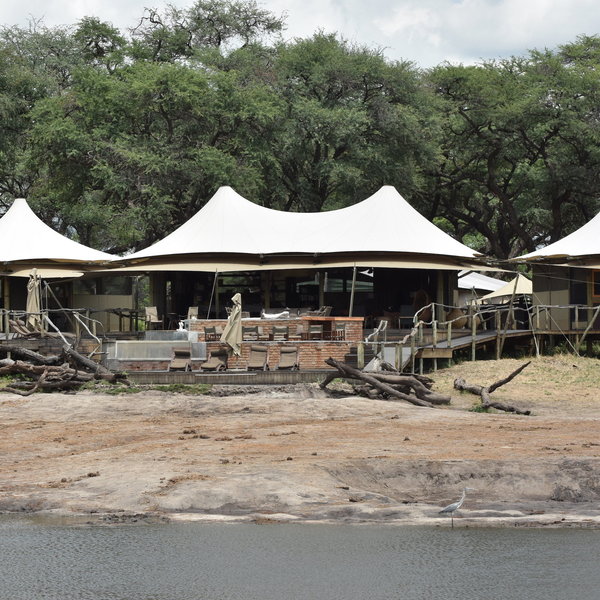
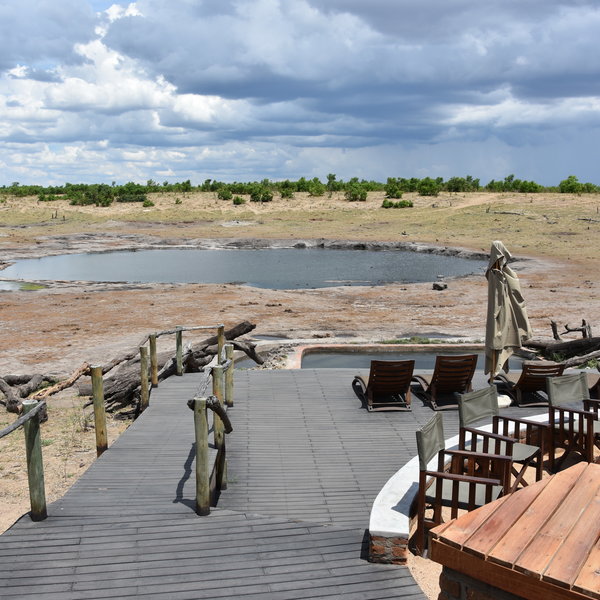
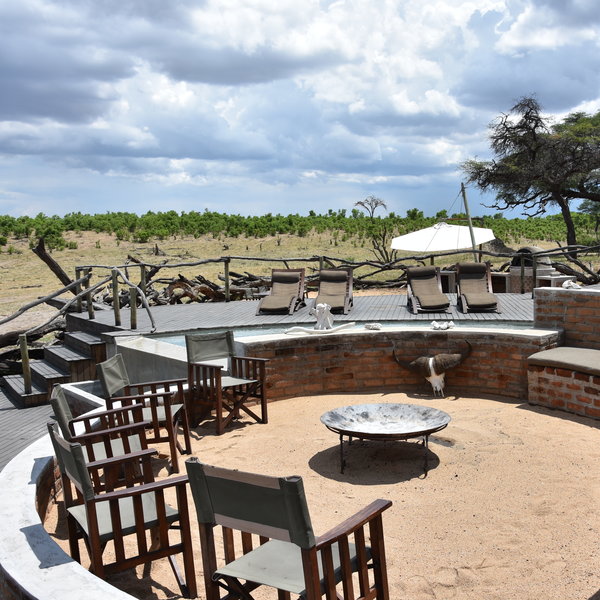
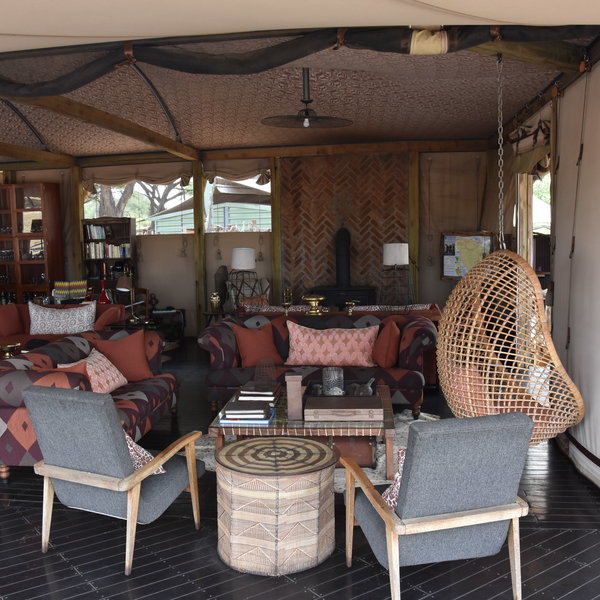
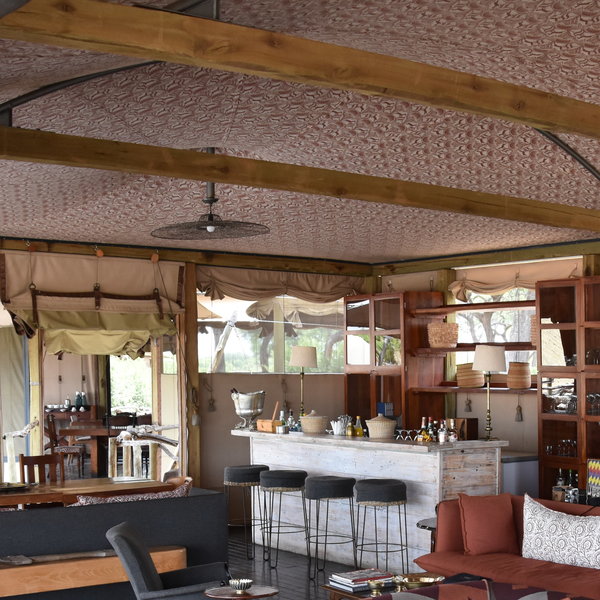
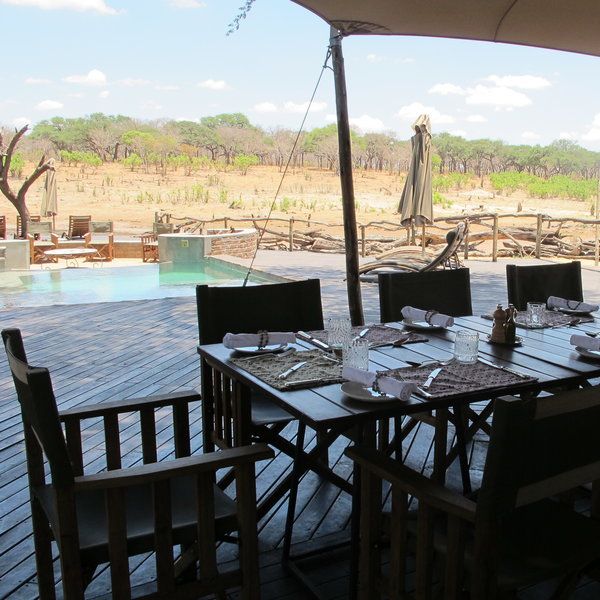
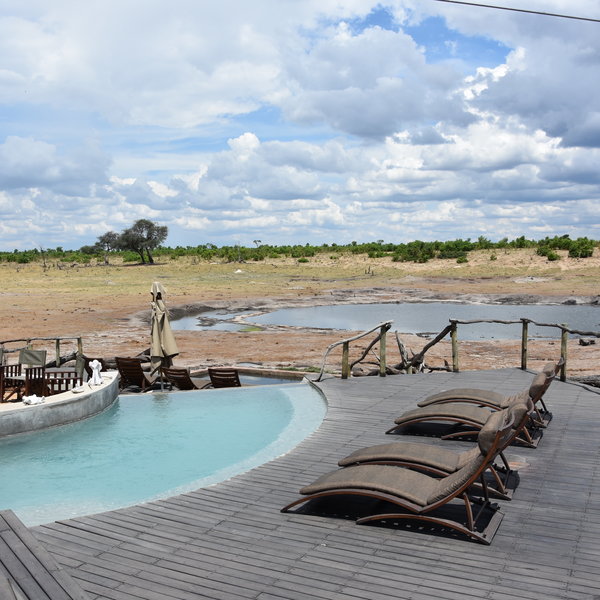
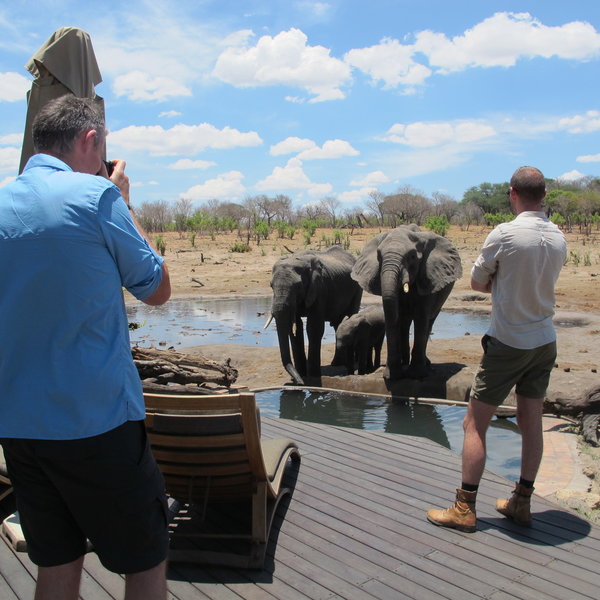
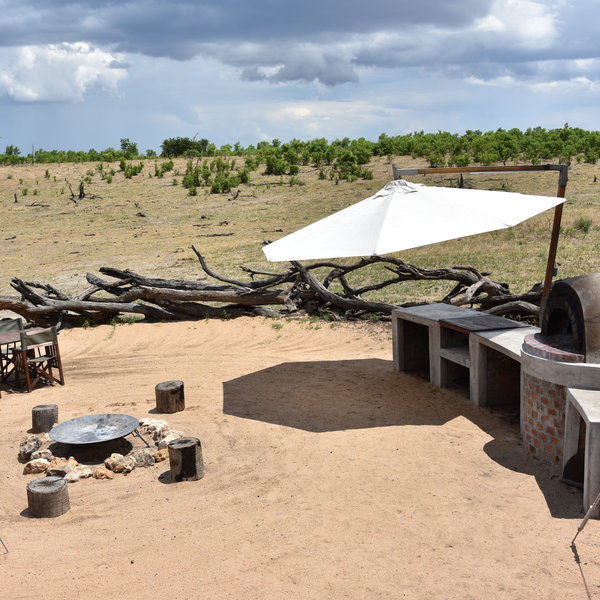
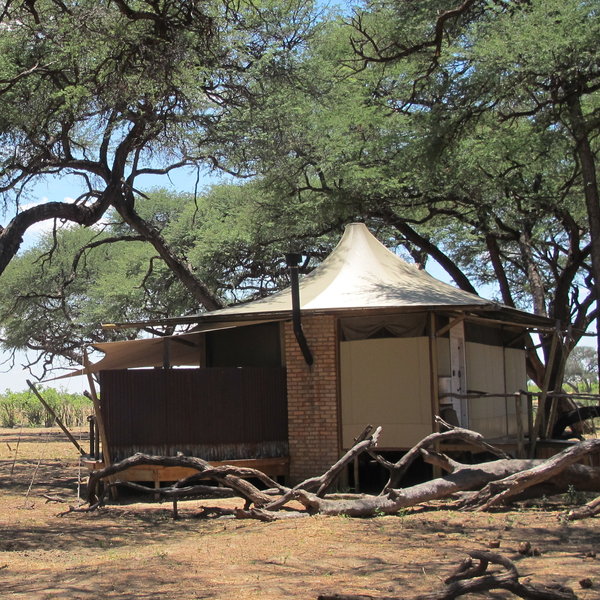
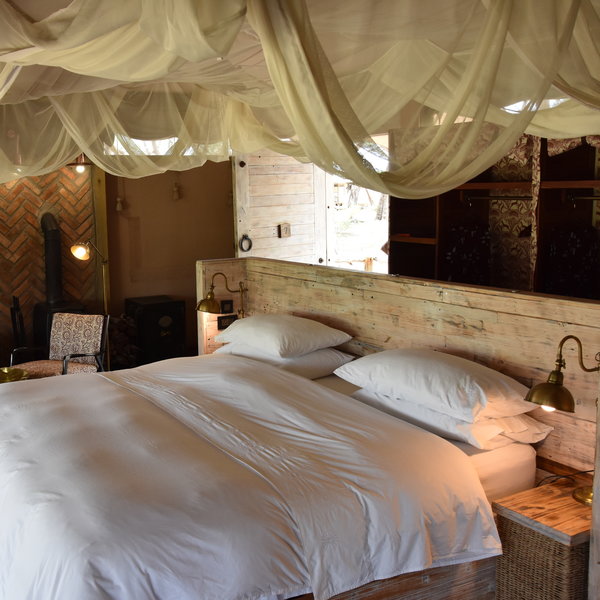
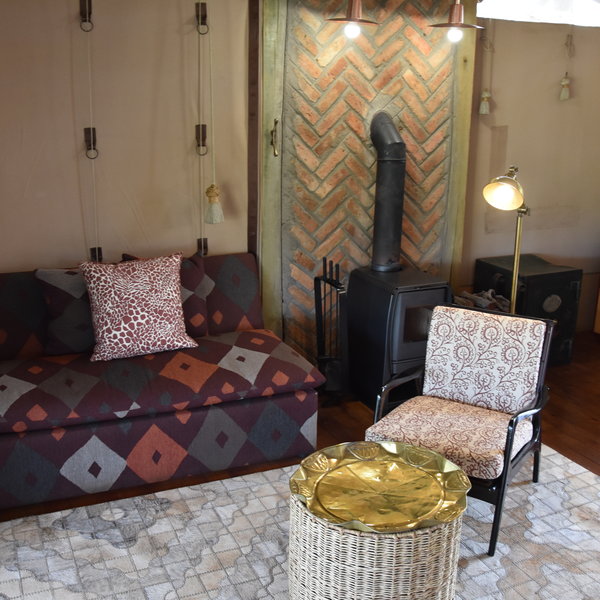
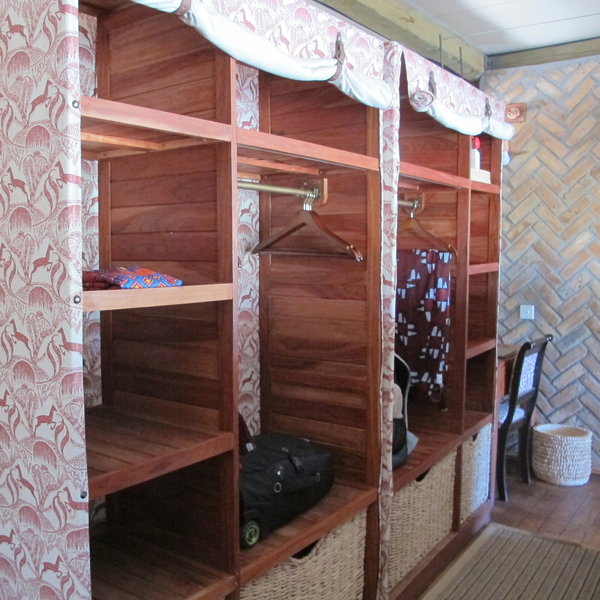
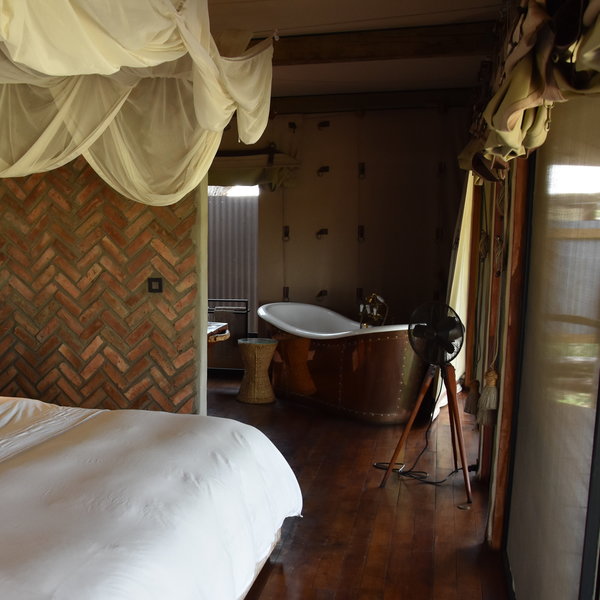
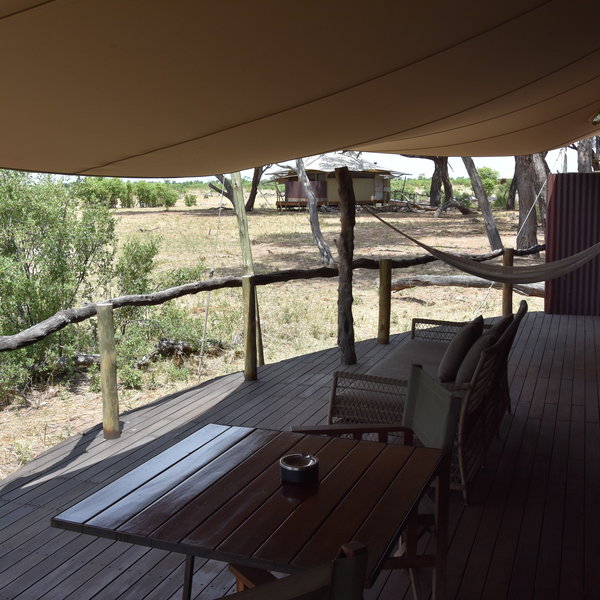
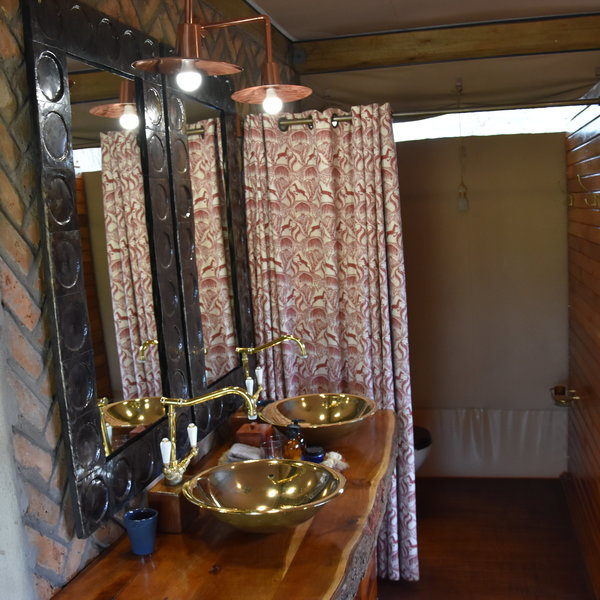
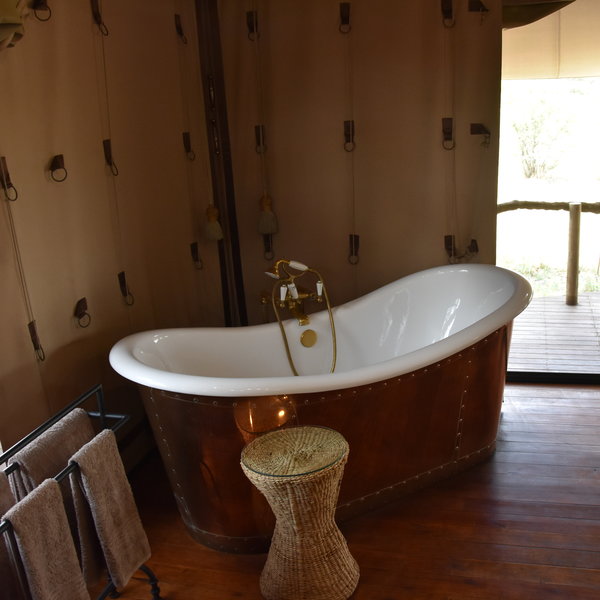
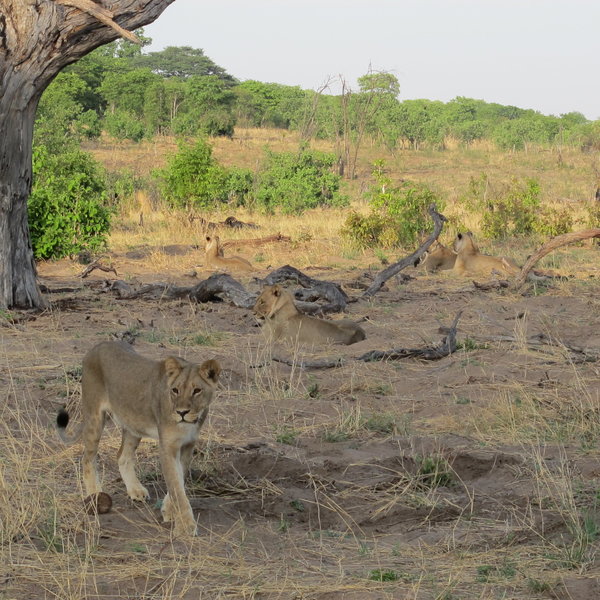
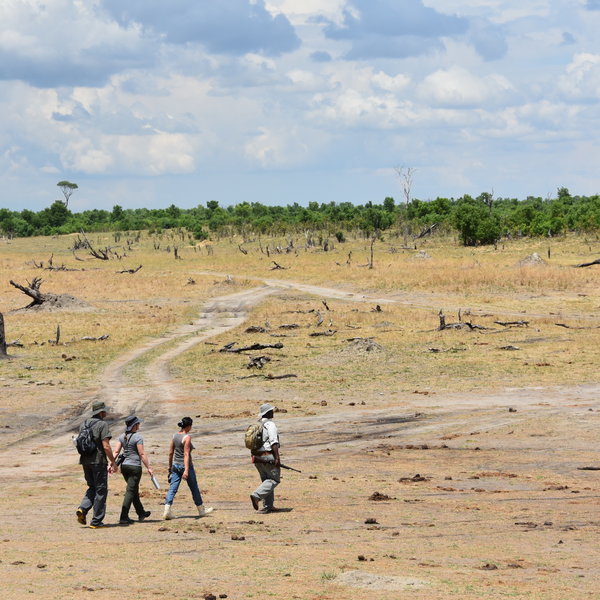
Expert Africa's gallery
When we travel we take lots of photos ourselves to give you a real and un-edited view of the safaris. See our 19 pictures and 2 videos of Somalisa Camp to get the candid view.
View gallerySafaris visiting Somalisa Camp
Just ideas, we'll always tailor-make a trip for you
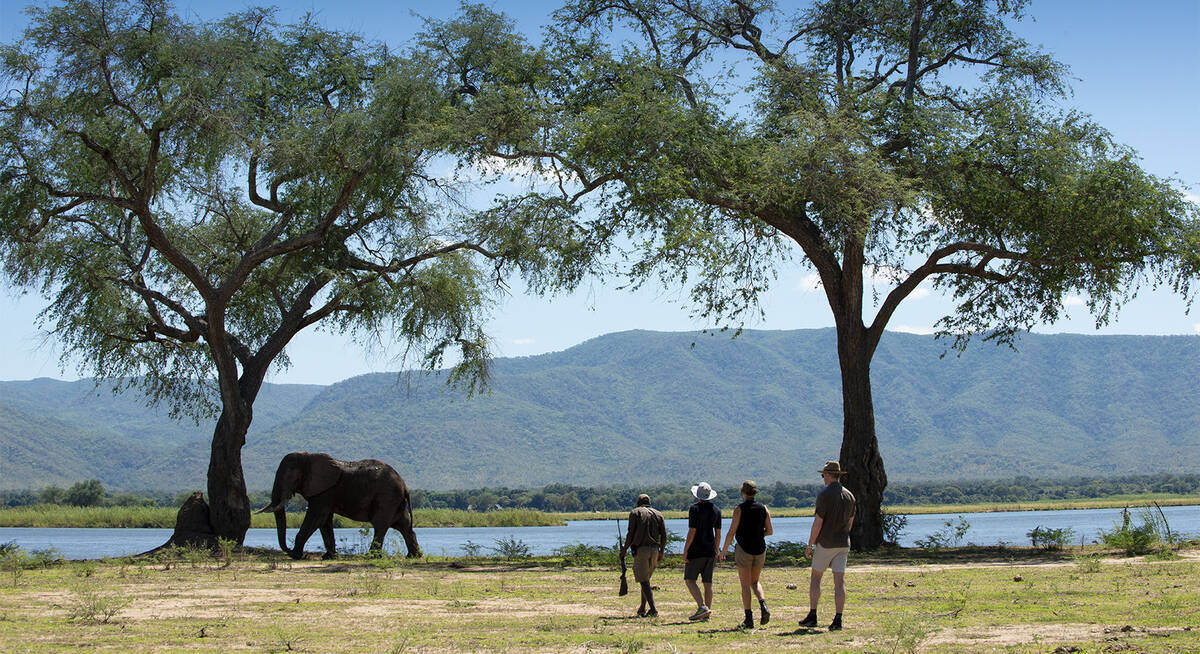
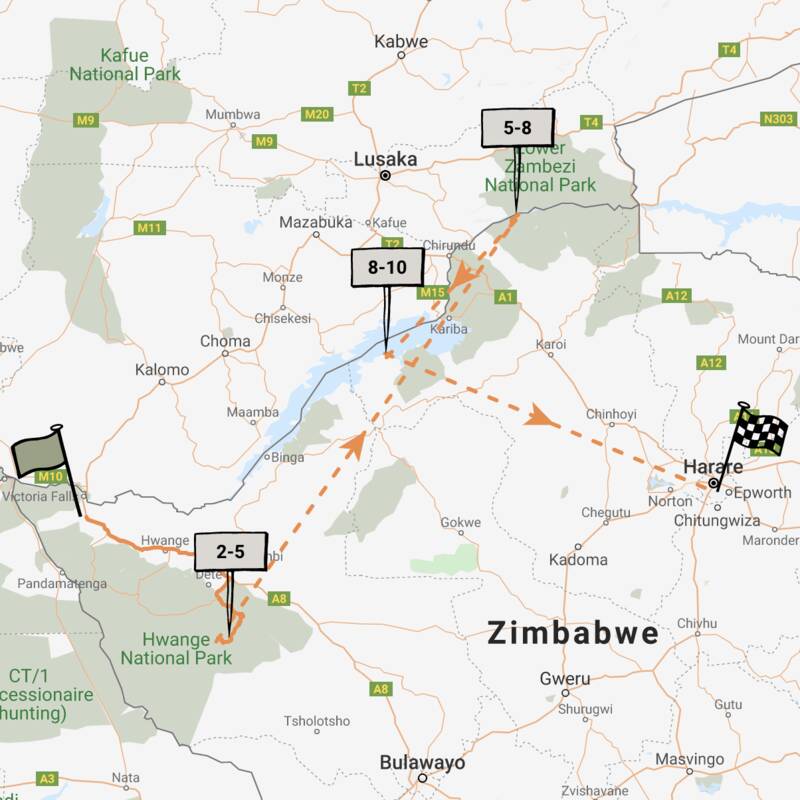
Grysbok Safari
9 days • 3 locations • 1 country
VICTORIA FALLS AIRPORT TO HARARE AIRPORT
Discover three of Zimbabwe’s iconic destinations in style, flying between Hwange, Mana Pools and Lake Kariba on this varied safari adventure staying at authentic yet luxurious camps.
Visiting Hwange, Matusadona and 1 other area
US$11,070 - US$16,110 per person
Somalisa Camp: Our full report
Set beneath a grove of acacia trees in a private concession on the eastern side of Zimbabwe’s Hwange National ...
... Park, Somalisa Camp underwent a complete rebuild in 2015. Gone is the simple, rustic property, to be replaced by a smart new set up with a much more luxurious style. The camp is fronted by an ancient dried-up watercourse known as the Sumamalisa Vlei, and this, along with the attendant waterhole, provides a great place to view the large herds of elephants for which Hwange is famous.
For every living tree used in the reincarnation of Somalisa, another 20 were planted, underpinning the camp’s claim to be a leading example of eco-friendly safari camps. The new structure incorporates recycled building materials in a very creative way, a solar-power farm generates all the electricity, and a purity system allows the camp to recycle 80% of the water used. Even the old tents were reused to create a fantastic new sister camp, Somalisa Expeditions. Clearly a lot of thought went into the camp's design, but the basics weren't forgotten, and you can also expect a focus on the safari experience, excellent guiding and great service.
Somalisa as a whole is divided into two independently run camps in close proximity: Somalisa Camp and the smaller Somalisa Acacia, within the concession they share with Somalisa Expeditions. Somalisa Camp consists of seven tented rooms, whereas Somalisa Acacia has two standard tents and two family-sized tents – although this set up is flexible, allowing the camps to cater for larger groups if needed. The main area is almost identical in both camps, but each operates with its own staff, kitchen and guides.
Somalisa’s Bedouin-style tented rooms are spread out in a large arc under the shady canopy of acacia and camelthorn trees. Far from the boy-scout image of a “tent”, each is built on low teak decking, with solid wooden frames providing support for the stretched sail canvas walls and roof.
Floor-to-ceiling gauze sliding doors, which lead out onto a private shaded deck with a sitting area, offer a view over the vlei, and allow for a breeze to circulate in the rooms. The tent interior is furnished with twin or king-size beds curtained by mosquito nets in an open-plan bedroom. A low partition separates the bed from a substantial storage area with a safe and charging points, and to one side is a small lounge with comfortable soft furniture. Additions such as a wood burner for colder winter nights, a fan for warmer weather and a cast-iron safe add practicality to the rooms, as well as a characterful, old-world style. The practical side even runs to a sliding wooden hatch, where the camp staff can leave your morning tea or coffee without having to enter your room. The en-suite bathrooms are equally well designed with twin basins, a bath, a separate shower and a toilet, as well as an outdoor shower.
To add to the adventure, Somalisa also has a raised sleep-out platform away from the camp, and overlooking a waterhole. There's a toilet at ground level and the “bedroom” is set up on the platform, while a guide stays in a tent a discreet distance away. If this appeals to you, do give us a call to find out more.
Sandy paths through the woodland connect almost all the rooms to the heart of Somalisa, although from room 1 there is a flat wooden walkway, allowing for wheelchair access access.
The open-sided main area is built on split-level wooden decks with full views of the dry riverbed and the waterhole in front of camp. This waterhole is a huge draw for wildlife, while the pods from the acacia and camelthorn trees that shade the tents are particularly favoured by giraffes and elephants, so you can often get some superb wildlife viewing around the camp itself; just be sure to stay alert when walking to and from your tent. The shady canopy is also a haven for birdlife, with a variety of species making this their home.
Back in the main area, the upper deck hosts the dining room, bar, lounge and curio shop, while the lower levels form the firepit and sundeck. Meals at Somalisa are generally communal, although if you prefer to dine privately, you need only ask. The dining table is sheltered under the canvas roof of the main area and, while technically “indoors”, has open views down to the waterhole and beyond. In the shop, along with a selection of clothing, you’ll find various craft items, some of them made by the community initiatives supported by the camp.
Technically the camp has swimming pools on both levels, though the original lower pool was such a draw for the local elephant population in search of clean water that it has now been formally declared a drinking trough for the wildlife. For a refreshing dip, today’s guests use the upper infinity pool instead.
Guests at the Somalisa camps have exclusive use of the private concession, which extends to about 150km2 within Hwange National Park. As part of its extensive conservation work, the camp pumps six waterholes in this area, ensuring a year-round water supply for wildlife – and thus excellent year-round wildlife viewing. There is also the option of game drives within the national park itself.
These activities, along with walking safaris, are conducted in the morning and late afternoon. All are led by knowledgeable and highly qualified guides, who are enthusiastic about the area's flora and fauna: guiding in Zimbabwe is some of the best in Africa, and some of the best guides are based at Somalisa.
Activities
4WD Safari
Birdwatching
Guided walking safari
Night drive
Private activities
Families & children
- Attitude towards children
- Somalisa Camp does not accept children below seven years of age. However, there is no age limit at Somalisa Acacia, where children of all ages are welcome.
- Property’s age restrictions
- Minimum age seven years. Children under the age of 16 are not permitted to take part in walking safaris.
- Special activities & services
- Short nature walks around the vicinity of the camp are an interesting and engaging option for children under 16, who may not take part in the usual walking safaris.
- Equipment
- High chairs and cots can be provided with advanced notice.
- Generally recommended for children
- For families with children aged about six and over, Expert Africa recommends Somalisa Acacia. Although Somalisa does accept children aged seven plus, safari activities tend to be too long for them and we consider the open nature of the camp unsuitable.
- Notes
- Somalisa is a very open safari camp, deep in the bush, with dangerous big animals passing through regularly. Children must be under parental supervision at all times.
Food & drink
- Usual board basis
- Full Board & Activities
- Food quality
- The food at Somalisa is fresh, and like the camp, well thought out, with light fare during the hotter part of the day and warming dishes in cooler weather.
We didn’t have the opportunity to eat at Somalisa when we stopped by in November 2017, but on our previous visits we've typically begun our day with tea and coffee at sunrise and a continental breakfast by the fire. There's usually a choice of cereals with fresh fruit and a selection of seeds, porridge with fruit compote, toast, muffins, cold meats, cheeses and hard-boiled eggs. Partway through the morning activity you'll break for tea, coffee and soft drinks served with a selection of muffins and biscuits.
On returning from our morning game drive, we have enjoyed a warm brunch during the cooler months of eggs Benedict with mushrooms, tomato wrapped in bacon, roasted butternut squash, chicken Caesar salad, fresh bread and a fruit platter. Later in the year, when the weather was warmer, we were served chicken kebabs with tzatziki, marinated olives, roasted vegetables, couscous, roasted butter beans, green salad and freshly baked bread, followed by Eton mess. At another sitting we made up our own pizzas from a selection of toppings, and these were then cooked in the pizza oven by the chef and served with a salad.
Many people like to retire for an afternoon siesta, but you don't go long between meals on safari, with a selection of sweet and savoury snacks served for afternoon tea. Then, during your second activity, sundowners and savoury snacks are offered.
A full three-course dinner is served on your return to camp. On two occasions, we've tucked into a starter of spicy butternut soup and another of orange, beetroot and feta salad. The main course on both visits happened to be a perfectly cooked beef fillet on butternut purée and courgette rosti, served with butternut and potato crisps or salad. Dessert was a pink grapefruit soufflé on one occasion, and coffee flan on another. All this is accompanied by a selection of local beers and spirits, or your choice of South African wine. - Dining style
- Mixture of group dining and individual tables
- Dining locations
- Indoor and Outdoor Dining
- Further dining info, including room service
- Private dinners are possible, with notice.
- Drinks included
- All drinks available at Somalisa – beers, South African wines and soft drinks – are included in the rates, although note that they do not stock drinks imported from outside Africa (such as champagne although there are some excellent South African sparkling wines on offer).
As part of Somalisa's drive to be eco-friendly, all guests are gifted an aluminum water bottle that they can use during their stay to fill up with fresh filtered water as needed, instead of going through numerous plastic water bottles.
Our travellers’ wildlife sightings from Somalisa Camp
Since mid-2018, many of our travellers who stayed at Somalisa Camp have kindly recorded their wildlife sightings and shared them with us. The results are below. Click an animal to see more, and here to see more on our methodology.

93% success

93% success

93% success

93% success

87% success

86% success

79% success

79% success

64% success

40% success

40% success

38% success

23% success

21% success

15% success

0% success

0% success

0% success
Getting there
- Location
- Hwange National Park, Zimbabwe
- Ideal length of stay
- A three- or four-night stay at Somalisa is ideal for most visitors, and this combines well with a stay in Victoria Falls town. Some visitors combine Somalisa with one or more of its sister camps, which include Nyamatusi Camp in Mana Pools, Bumi Hills Safari Lodge in Matusadona or Linyanti Tented Camp and Khwai Tented Camp in Botswana.
- Directions
- Somalisa Camp can be reached by road from Victoria Falls town. This fairly economical option takes about 3½ hours in total: 90 minutes on a tarred road, followed by about two hours on a game-drive vehicle through Hwange National Park (though the second part of the journey may take longer, depending on what you see on route). Alternatively, you can fly into the nearby Manga airstrip, then it's about a 30-minute game drive transfer to camp.
- Accessible by
- Fly-and-Transfer
Special interests
- Honeymoons
- Somalisa Camp's spacious tents combine old-world, explorer chic with modern comforts. Yet this is still a bushcamp at heart, with excellent guiding and superb wildlife-watching opportunities, making it a perfect place to spoil yourself on a Zimbabwe honeymoon.
- See ideas for Honeymoons in Zimbabwe
- Wildlife safaris
- Somalisa is in an area rich in wildlife, with healthy populations of elephant, buffalo and lion. These and other animals can be seen on walks and drives, as well as at the waterholes in front of camp, making for a varied wildlife safari in Zimbabwe.
- See ideas for Wildlife safaris in Zimbabwe
- Luxury safaris
- Somalisa Camp offers world-class service and comfortable furnishings whilst managing to retain an authentic bush-feel. Expect spacious tents with rustic-looking décor featuring wood panelling and copper bathtubs.
- See ideas for Luxury safaris in Zimbabwe
Communications
- Power supply notes
- The camp is run entirely on solar power farmed from impressively sized solar panels – the biggest of its kind we’ve seen at a safari camp. There is a back-up generator for the very rare occasions where this doesn't provide enough power. Each tent has a strip of multi-national plug sockets for charging batteries.
- Communications
- There is no cellphone signal or WiFi at Somalisa, but the camp can communicate by satellite phone in case of emergency.
- TV & radio
- No facilities available.
- Water supply
- Borehole
- Water supply notes
- Water from the borehole is filtered multiple times, to provide clean and fresh-tasting drinking water.
Health & safety
- Malarial protection recommended
- Yes
- Medical care
- There is a basic first-aid kit on site with both managers and guides trained to use it. The nearest doctor is in Hwange Town, about two hours' drive away. A medical air rescue service (MARS) covering Hwange is available in the event of serious illness/injury.
- Dangerous animals
- High Risk
- Security measures
- Guests are accompanied to and from their tented rooms after dark by a guide. Air horns are provided in each room to attract attention in case of emergency.
- Fire safety
- There is a fire extinguisher outside both the kitchen and each tented room.
Useful info
- Disabled access
- On Request
- Laundry facilities
- A complimentary laundry service is included, although for cultural reasons, women's underwear isn't accepted. Washing powder is provided in the bathrooms for guests who wish to hand wash these, and any delicates, themselves.
- Money
- Each room has a large safe in which to lock valuables.
- Accepted payment on location
- The camp accepts Visa and Mastercard, as well as cash payments in US dollars, British pounds and South African rand.
Plan and book your trip with Expert Africa
All of our trips are tailor-made, so we'll always adapt them to suit you. Talk to an Expert and let us plan and arrange your perfect trip.

Talk to an Expert
Call or email us now! We’ll match you with the Specialist in our team who is best suited to help you. Then together we can start planning your trip.

Set up your itinerary
Based on our experience and your ideas, your specialist will create a detailed, costed itinerary. We’ll refine it together, until we have a trip that you’re perfectly happy with.

Prepare for your trip
The same Specialist will make the seamless arrangements for your trip, send you detailed travel documents, and be available to answer any questions before you depart.

Travel with peace of mind
After you set off, you’ll be cared for by our partners in Africa, most of whom have worked with Expert Africa for decades. And if you ever need us urgently, we’re available 24/7.

When you return
We love to learn about your trip, and so will always be grateful if you’ve the time to give feedback to your Specialist when you return.
Somalisa Camp's location
Look closer at the environment and surroundings of Somalisa Camp.
Other lodges in Hwange National Park
Alternative places to stay in this same area.
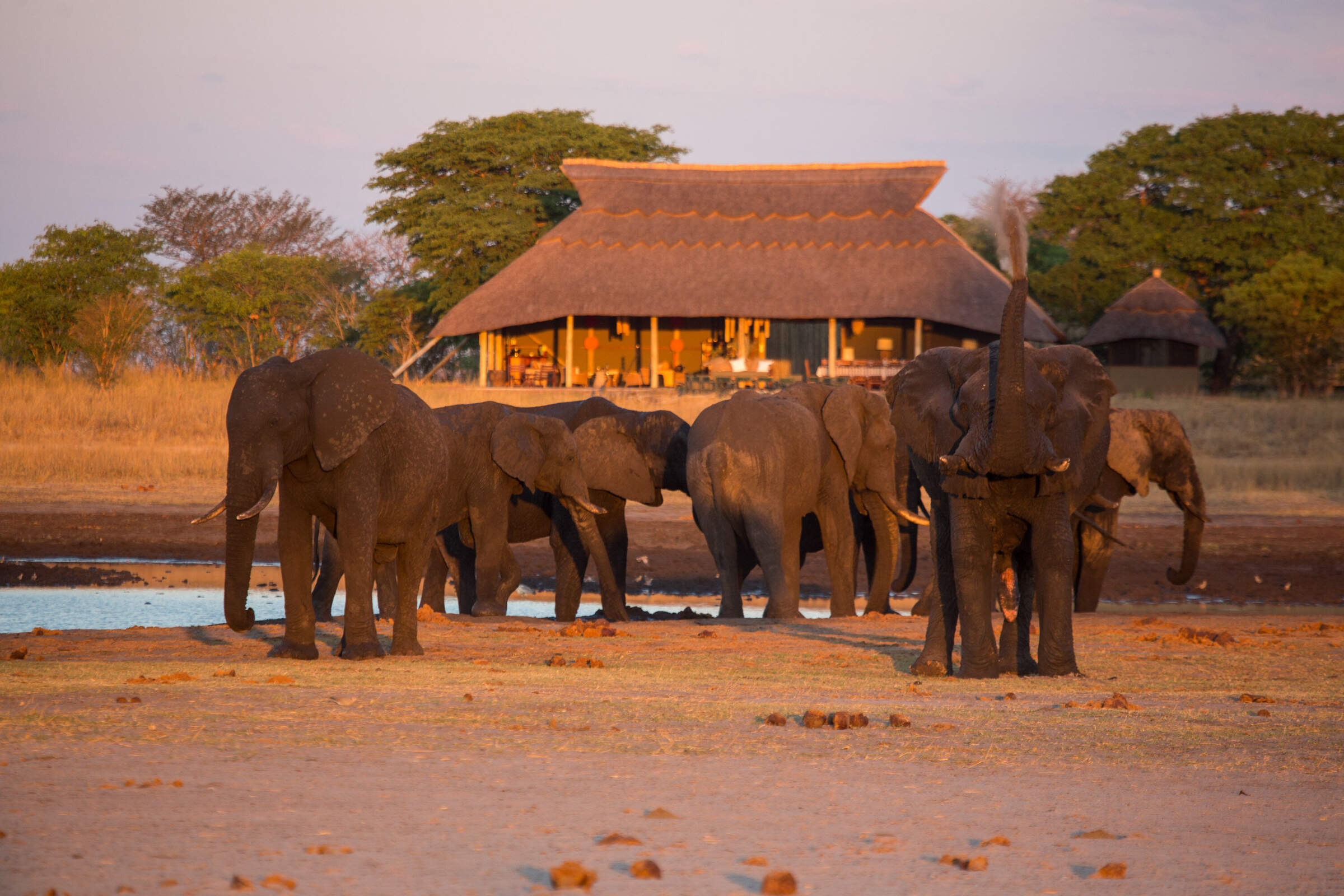
Camp Hwange
Overlooking a waterhole in a remote part of Hwange National Park, Camp Hwange offers great guiding in a pristine wilderness at reasonable prices.
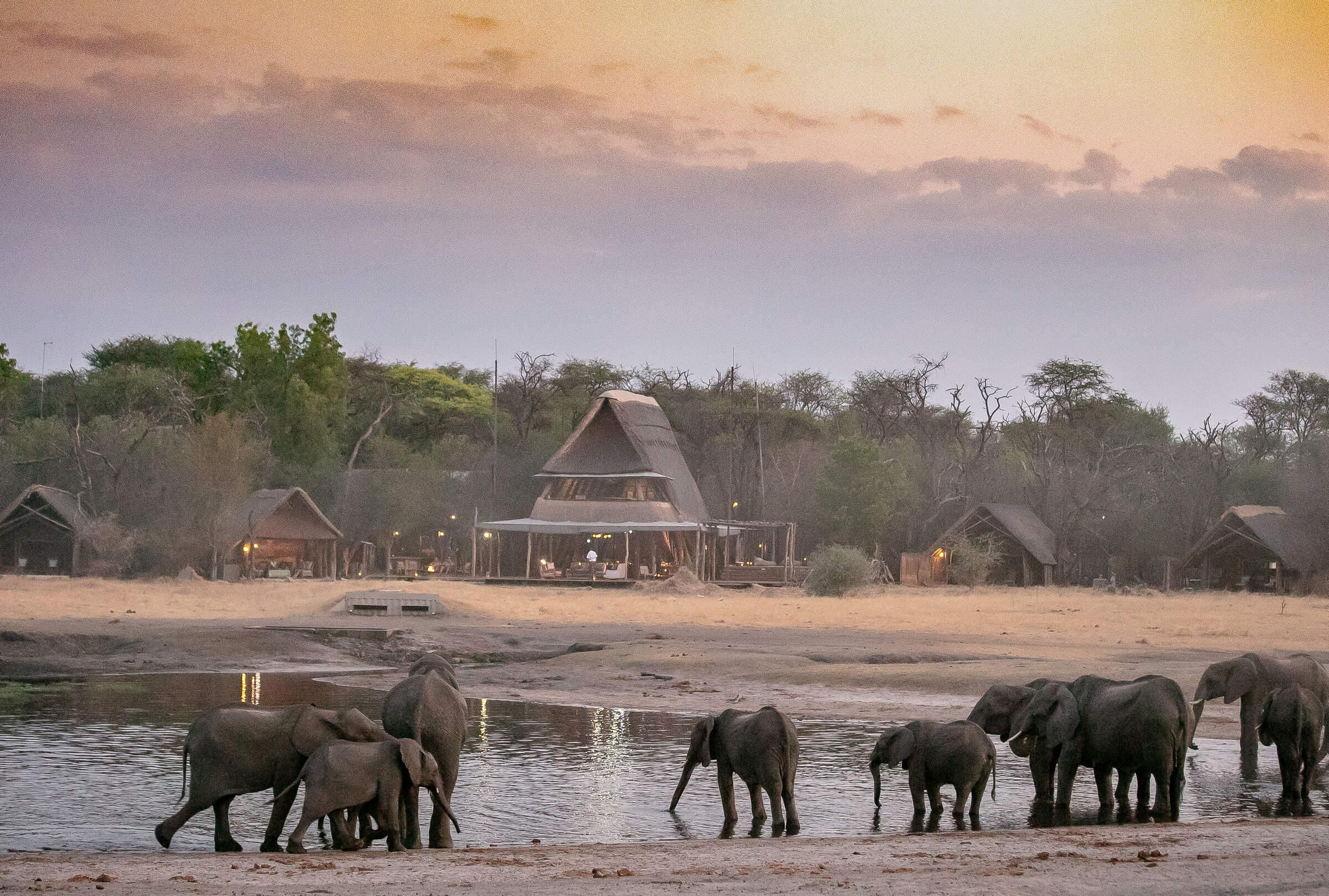
The Hide
Located in a small, private concession, The Hide is a relaxed and comfortable camp offering submerged hides and great family accommodation.
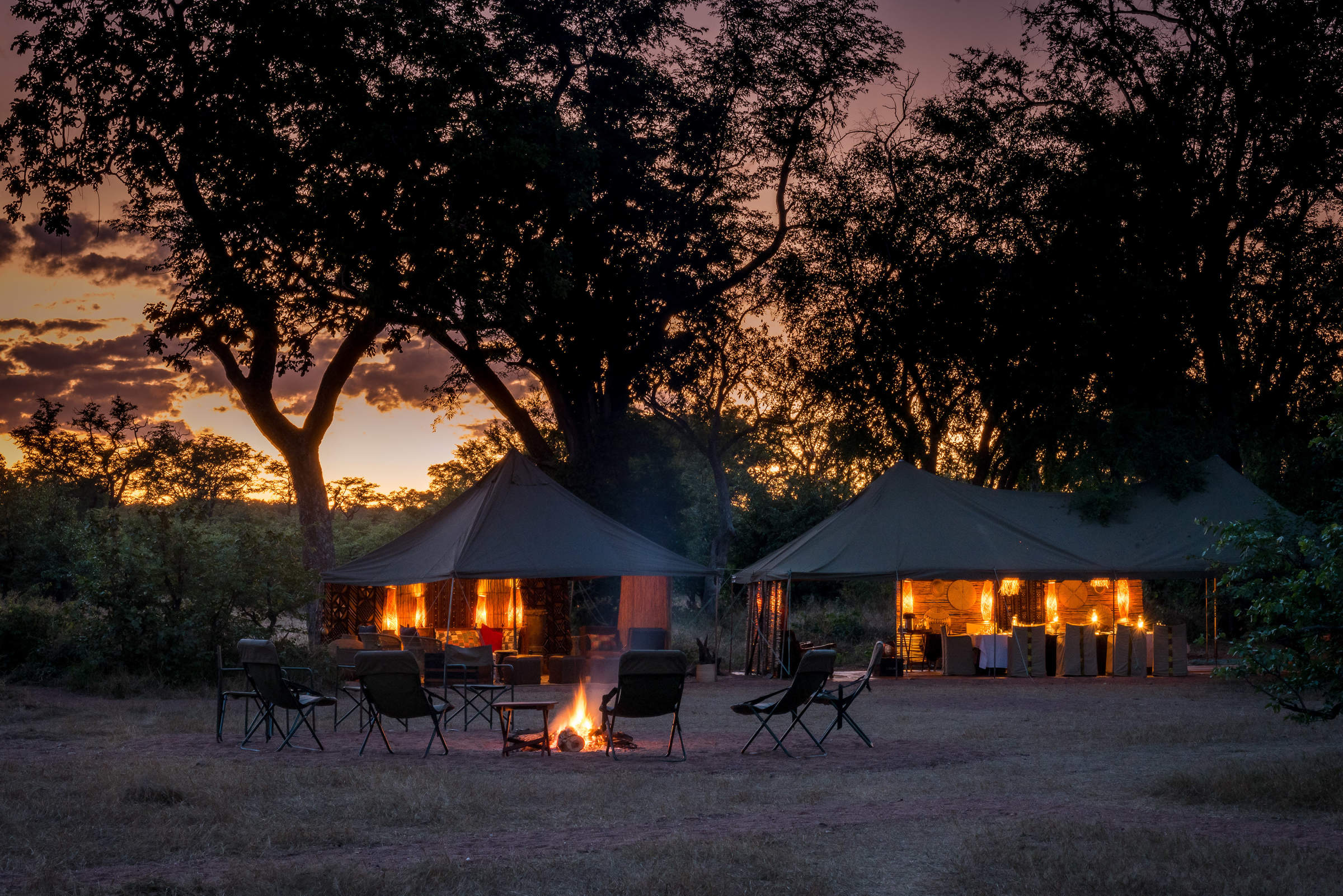
Hwange Bush Camp
Hwange Bush Camp is a small seasonal camp offering comfortable tents, great food, and superb guiding, and is often used by exclusive groups.
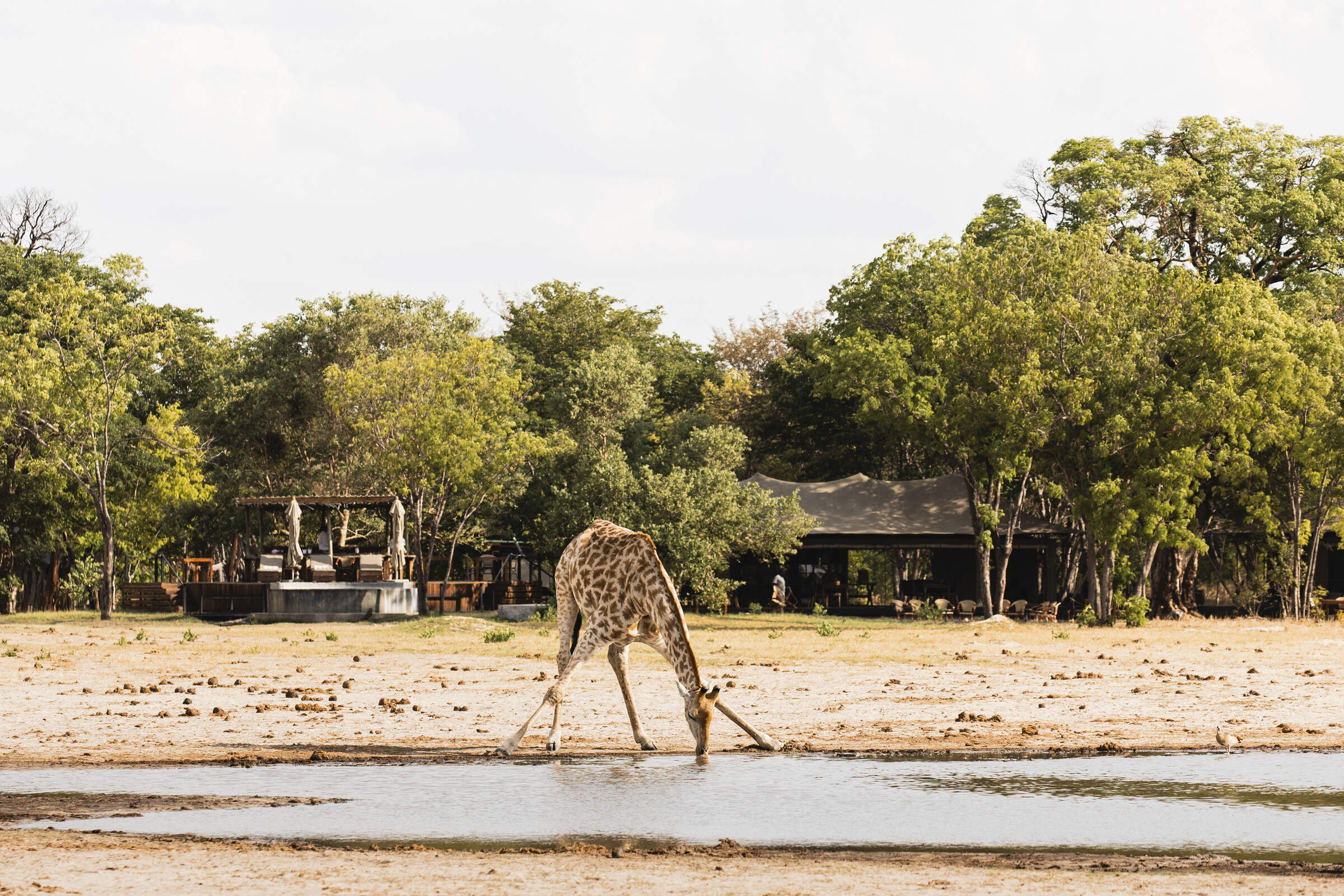
Little Makalolo Camp
Tucked away in Hwange National Park overlooking a waterhole, Little Makalolo Camp combines top guiding with excellent wildlife watching.
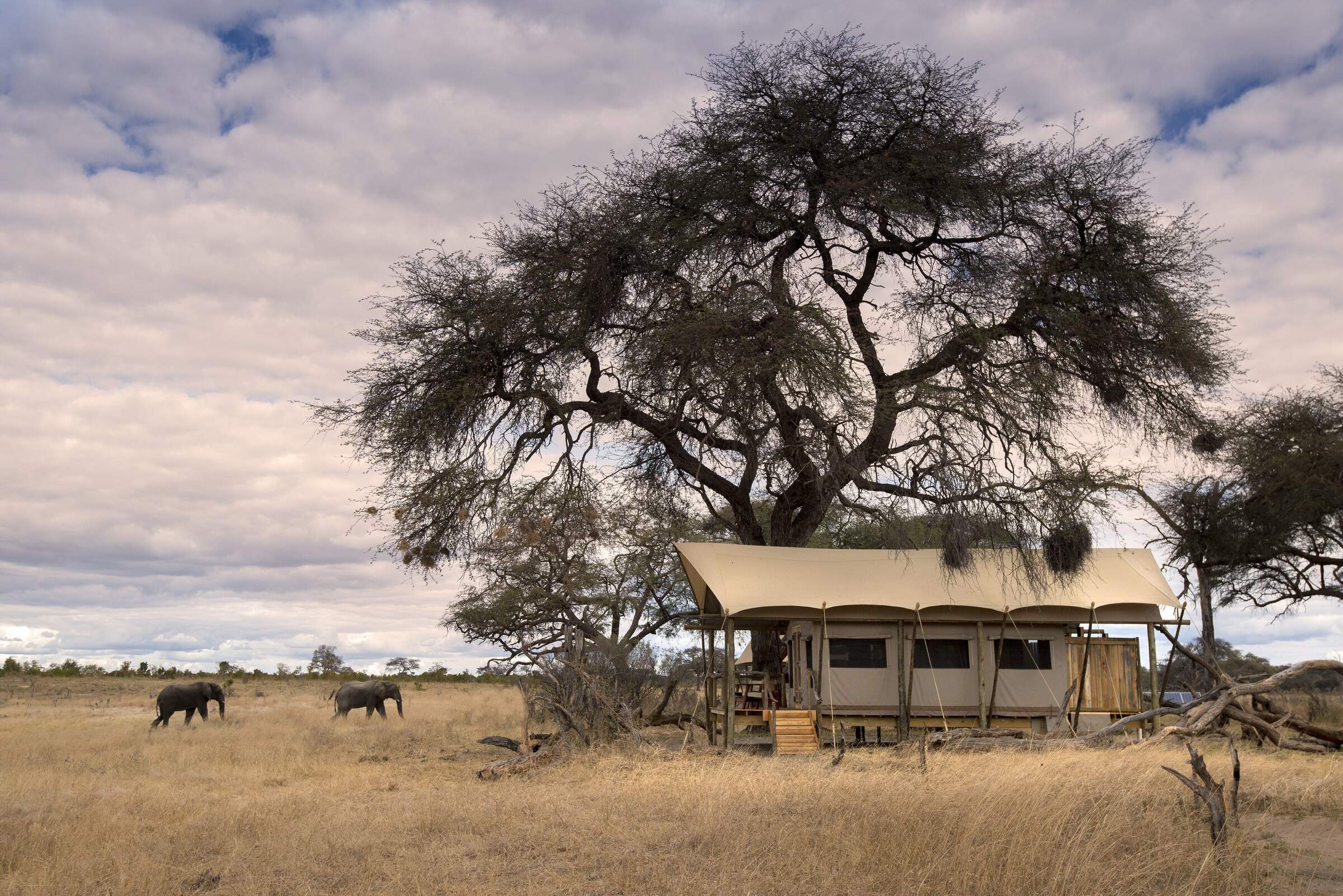
Somalisa Expeditions
A simple but stylish camp, Somalisa Expeditions sits in the heart of Hwange National Park, offering walking safaris and game drives.
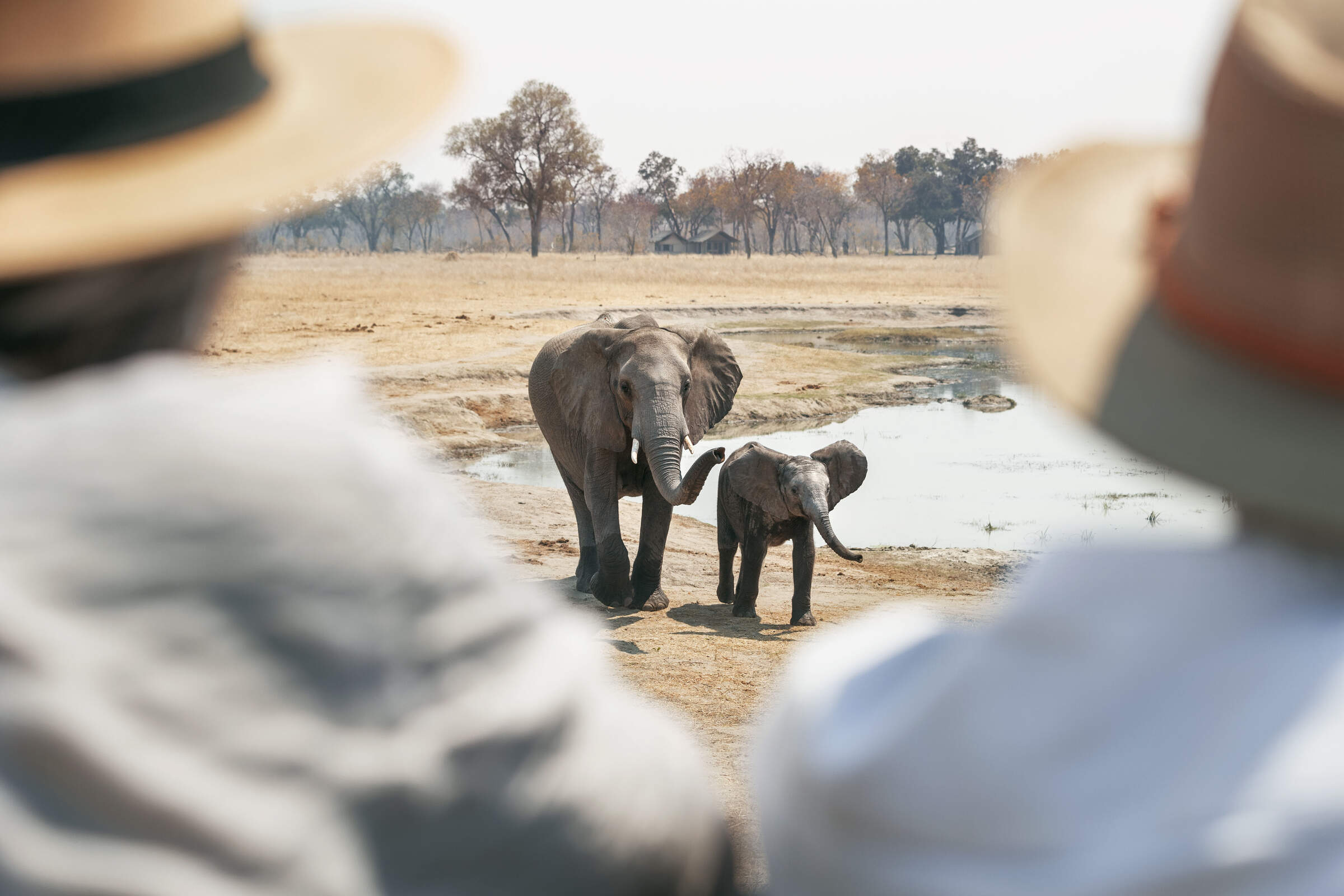
Davison's Camp
Within the Linkwasha Concession, Davison's Camp offers superb value for money, morning walking safaris and spot-lit drives after dark.
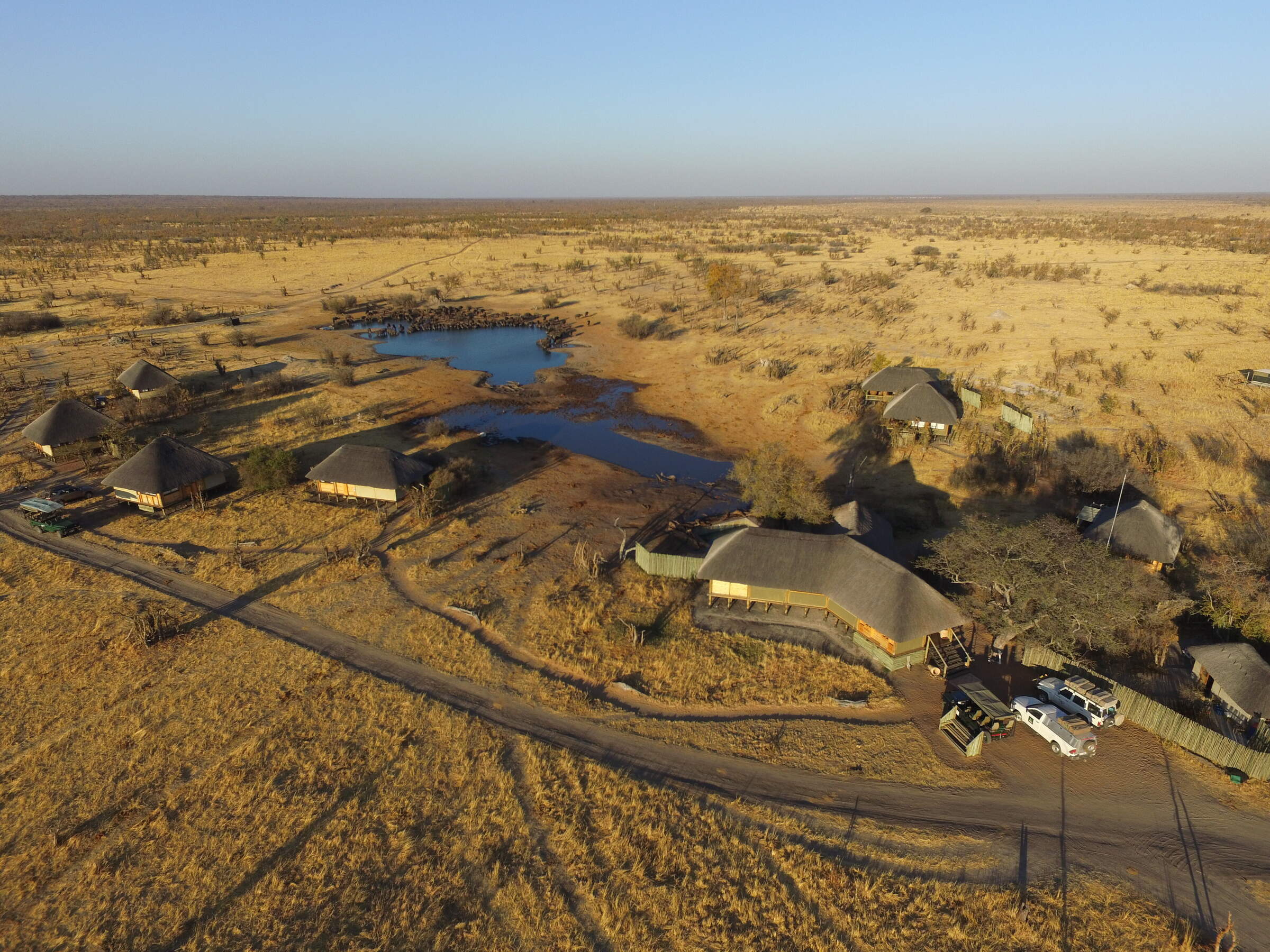
Nehimba Lodge
Nehimba is a comfortable, good-value camp in a remote area of Hwange National Park, teeming with wildlife.
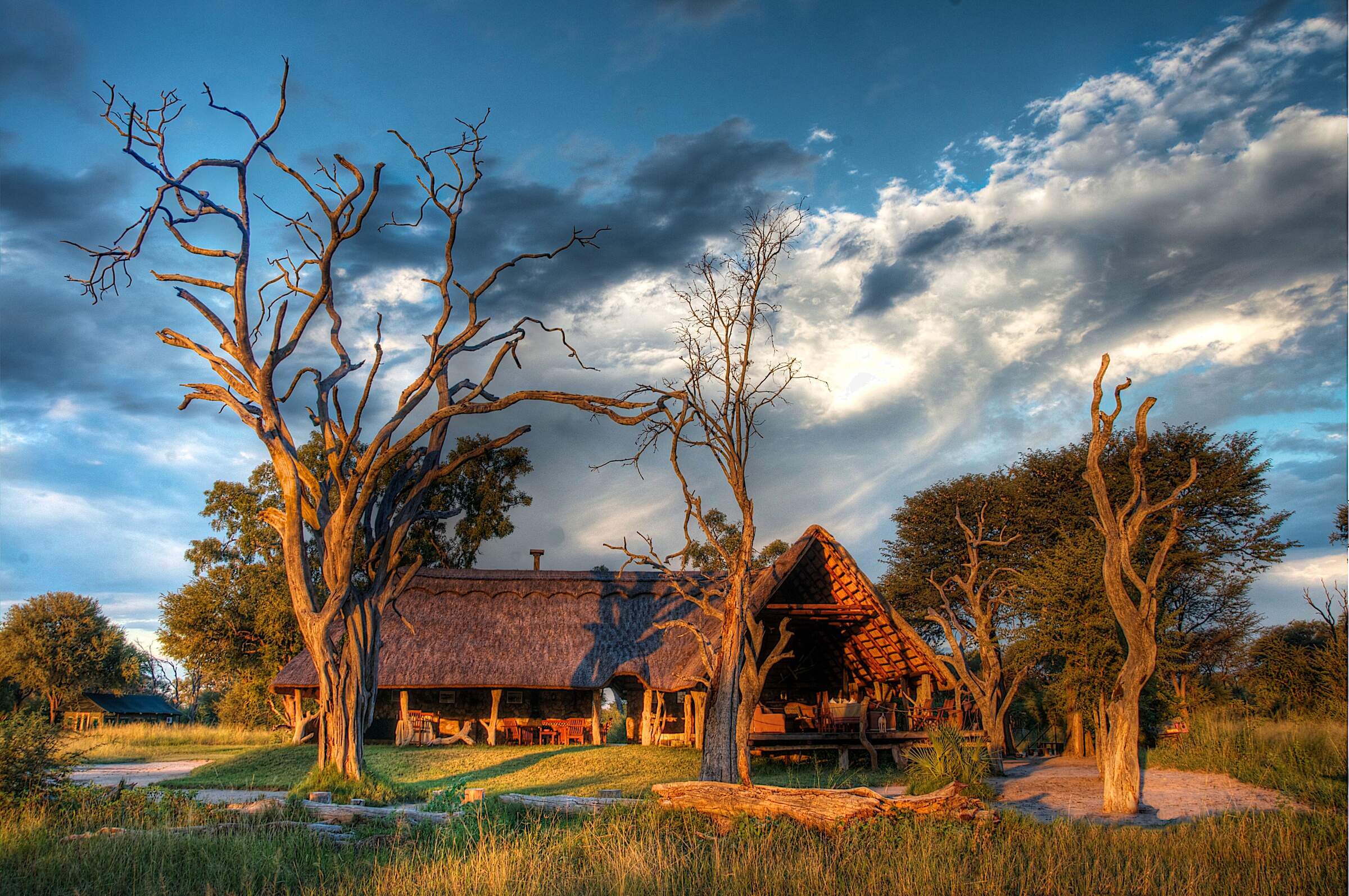
Bomani Tented Lodge
Bomani is a down-to-earth lodge with a range of activities in a remote region of western Zimbabwe, adjacent to Hwange National Park.
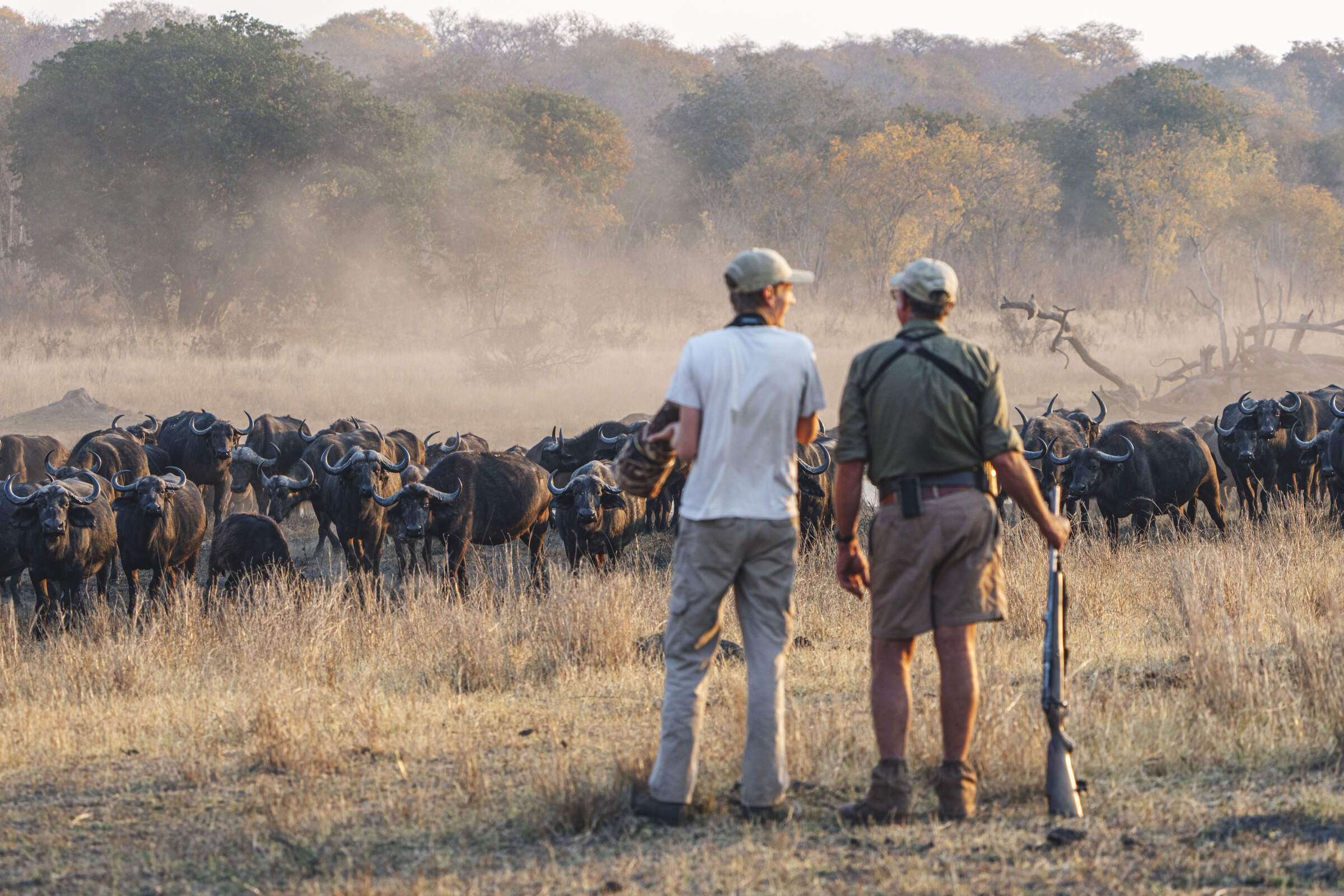
Khulu Bush Camp
Just outside Hwange National Park, Khulu Bush Camp features a waterhole popular with wildlife, especially elephants and offers excellent value for money.
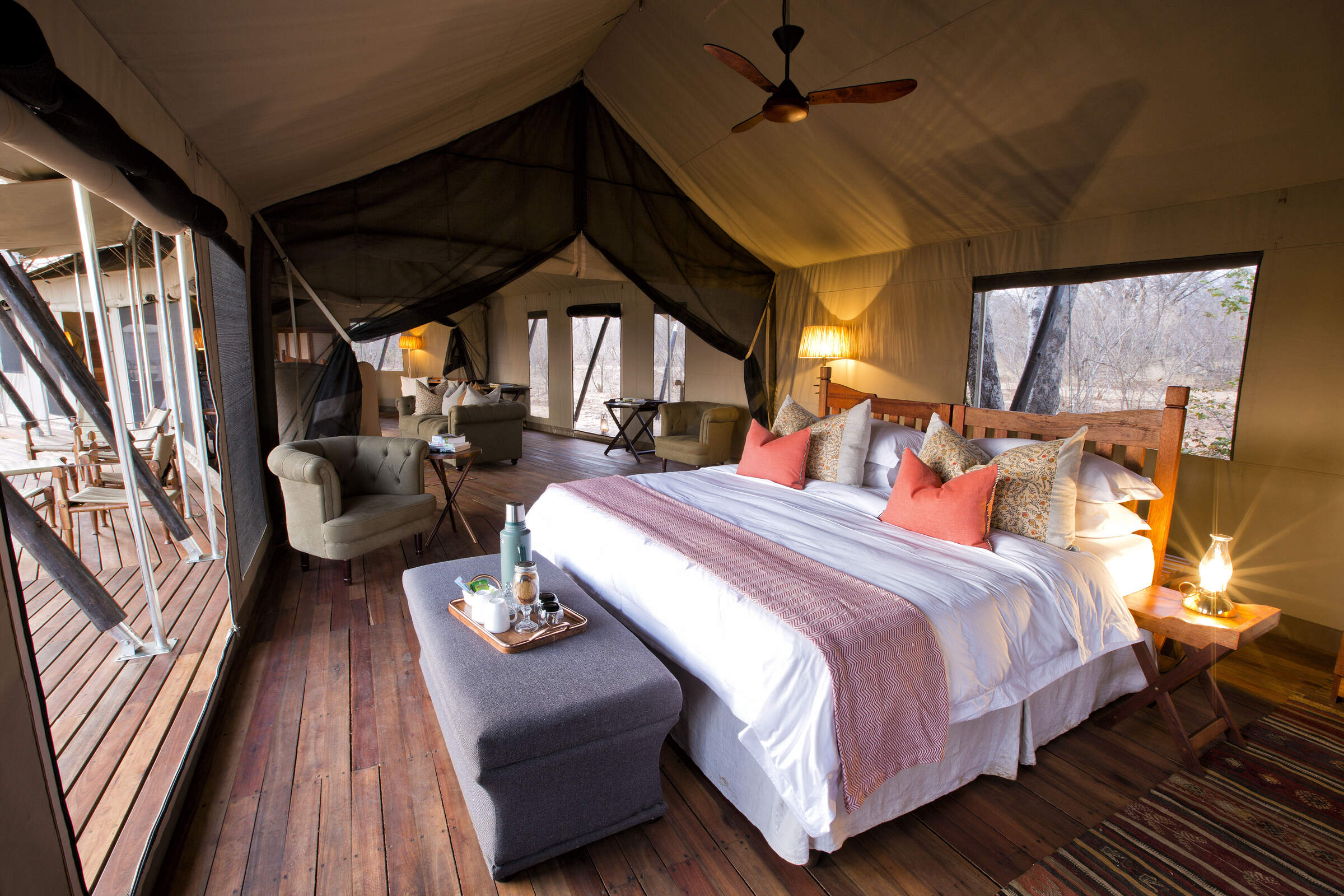
Verney's Camp
Verney's Camp is one of the newest offerings in Hwange, located in the wildlife rich, open landscape in the south-eastern section of the park.
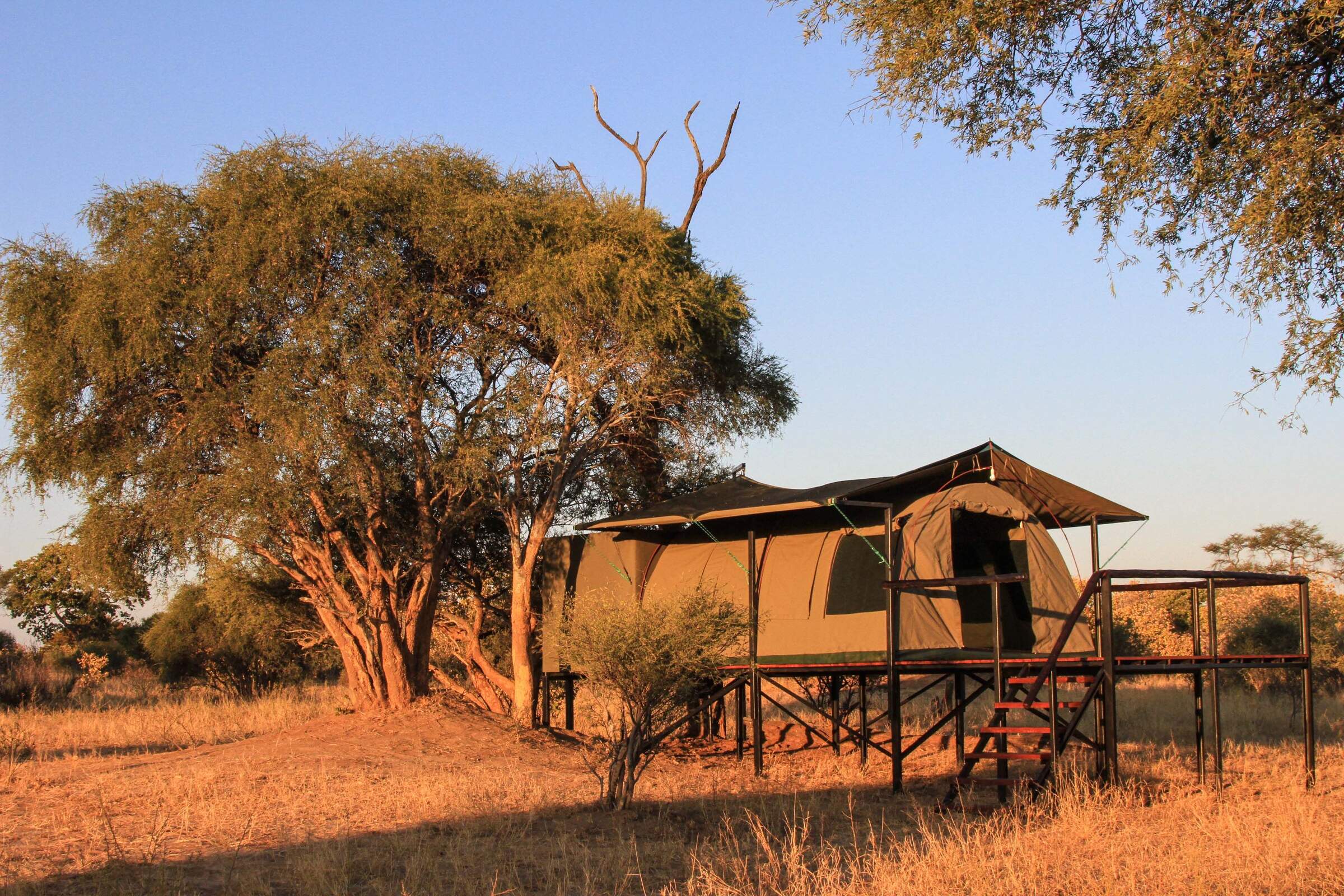
Jozibanini Camp
Remote and rugged, Jozibanini is one of the most remote camps in Zimabwe's largest National Park. Stay here for a real wilderness experience.
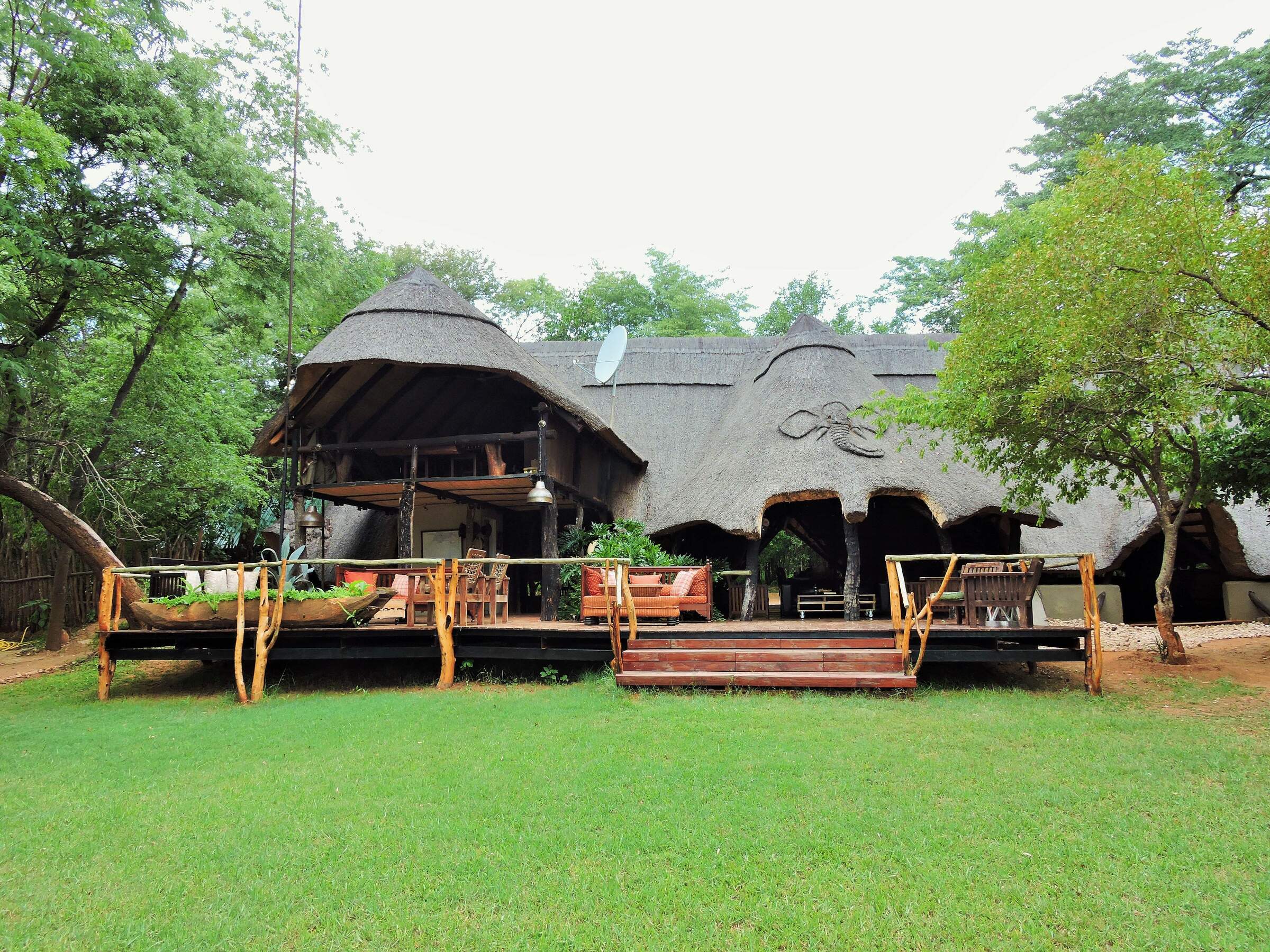
Ivory Lodge
Just outside Hwange National Park, the small Ivory Lodge is a great place to see large herds of elephant as well as smaller plains game.
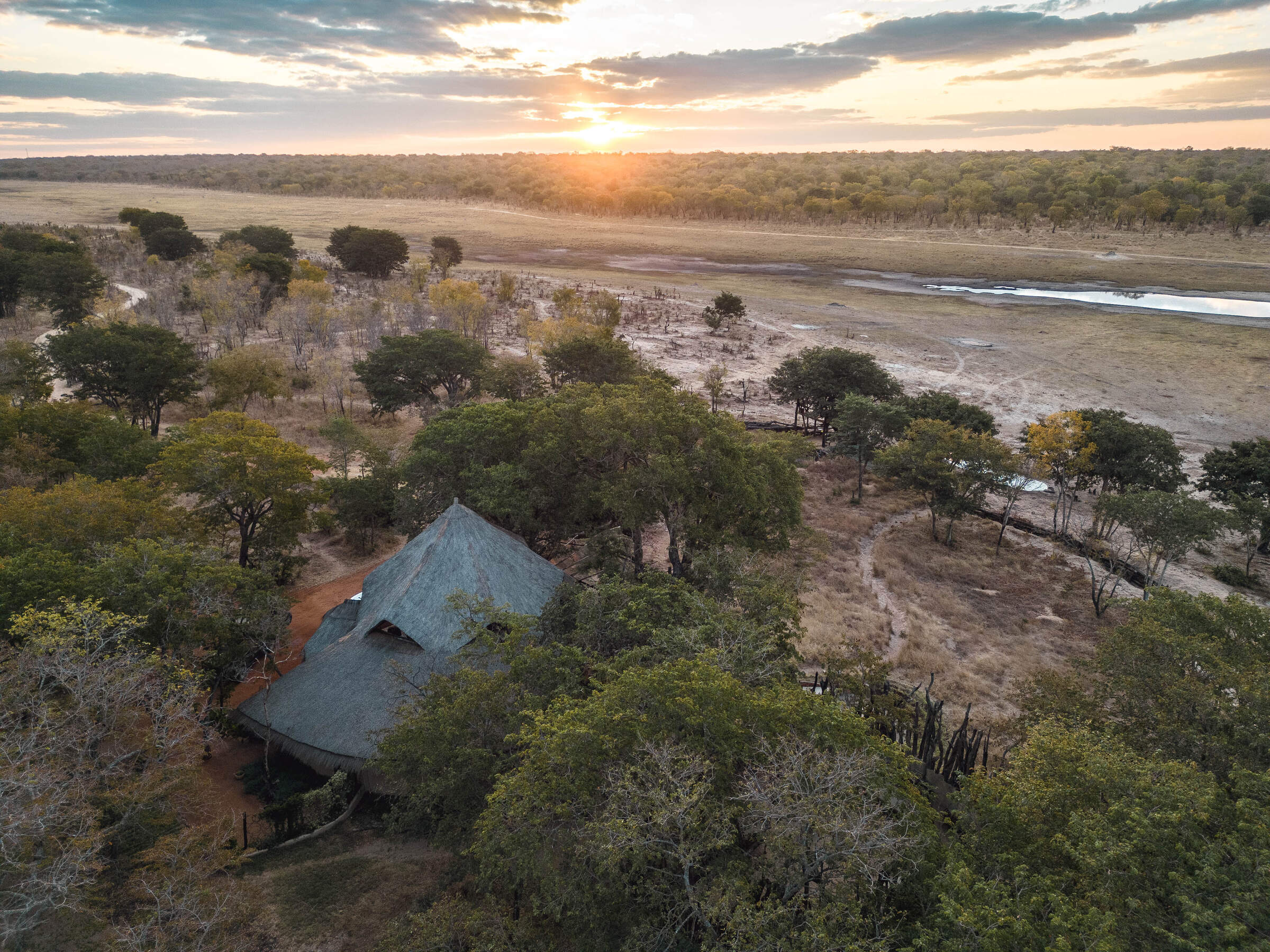
Sable Valley Lodge
Set on the 12km Dete Vlei, the recently upgraded and family-friendly Sable Valley sits in a private reserve within easy reach of Hwange National Park.
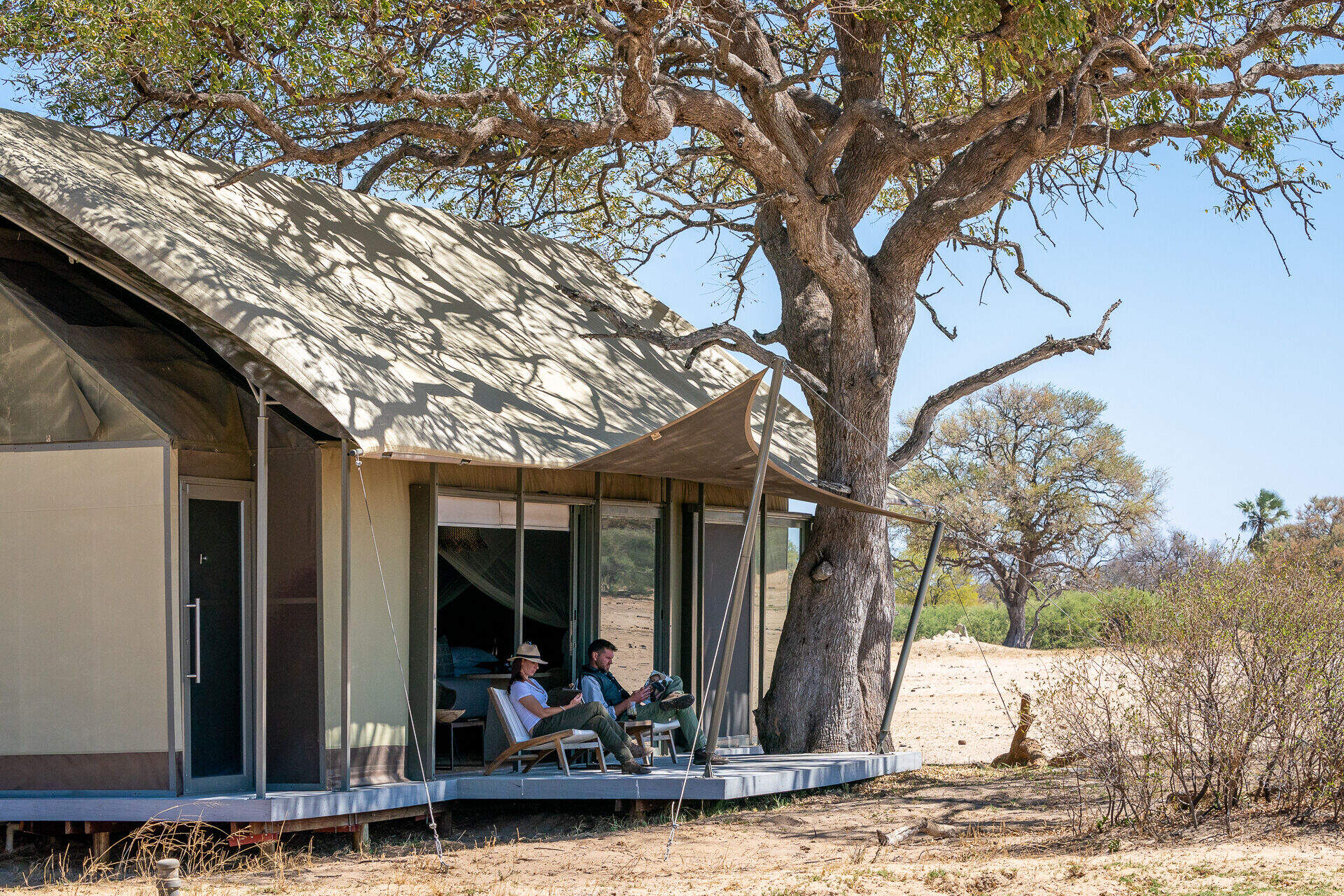
Linkwasha Camp
In its own private concession within Hwange National Park, Linkwasha offers excellent wildlife sightings and luxurious surroundings.
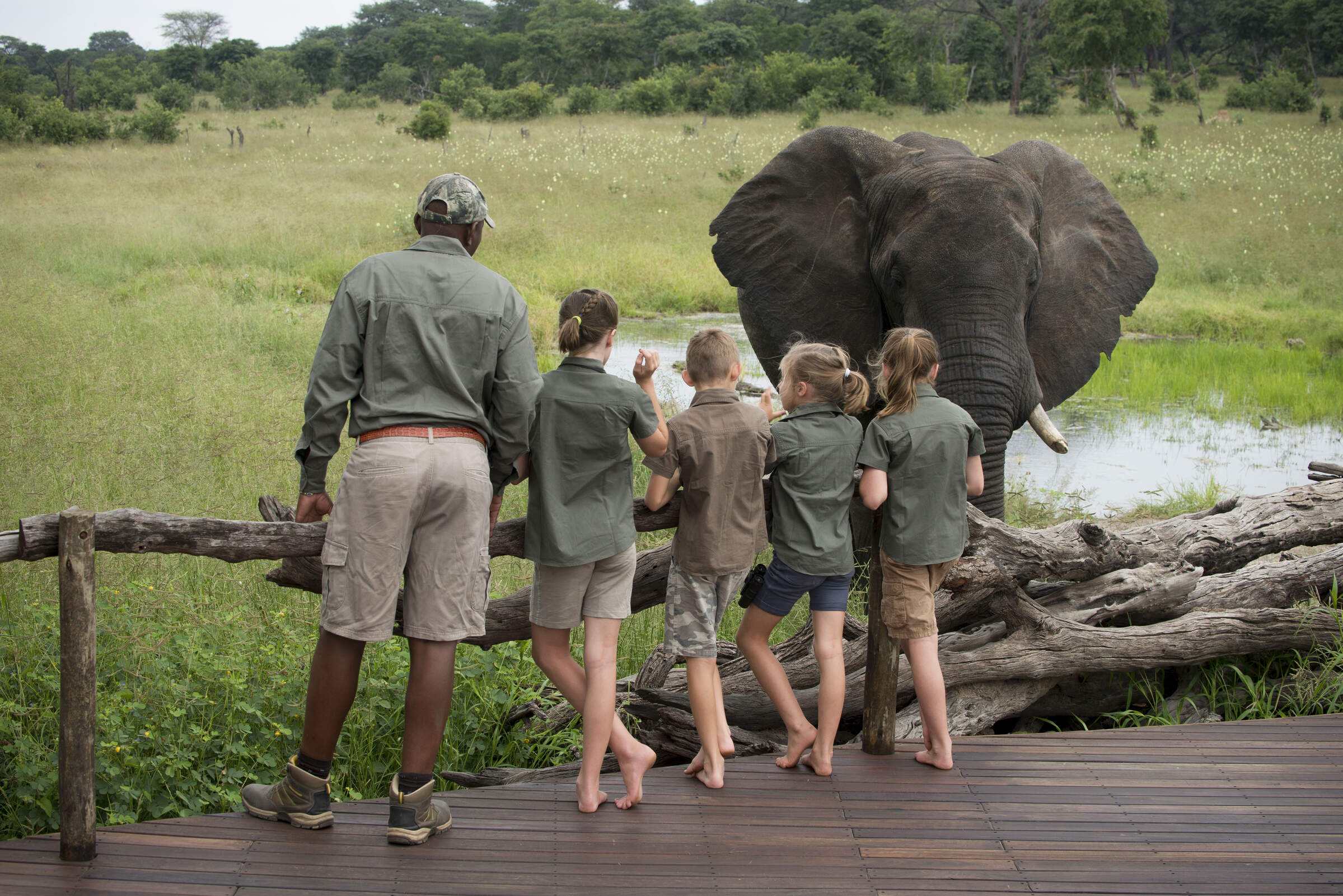
Somalisa Acacia
Somalisa Acacia is a family-friendly, yet remote and luxurious safari camp in Hwange National Park.
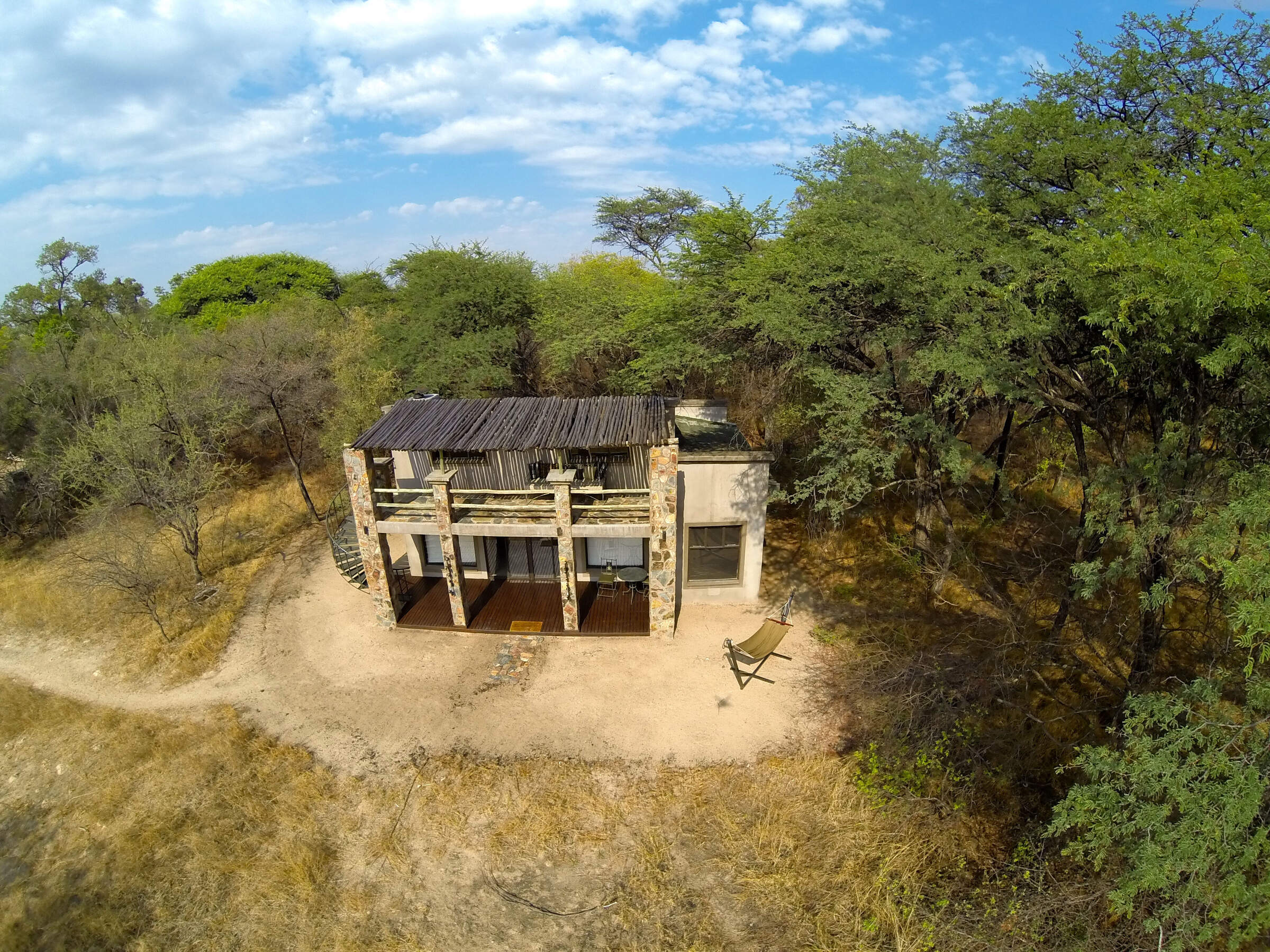
Camelthorn
Camelthorn is a stylish lodge with a range of activities in a remote region of western Zimbabwe, adjacent to Hwange National Park.
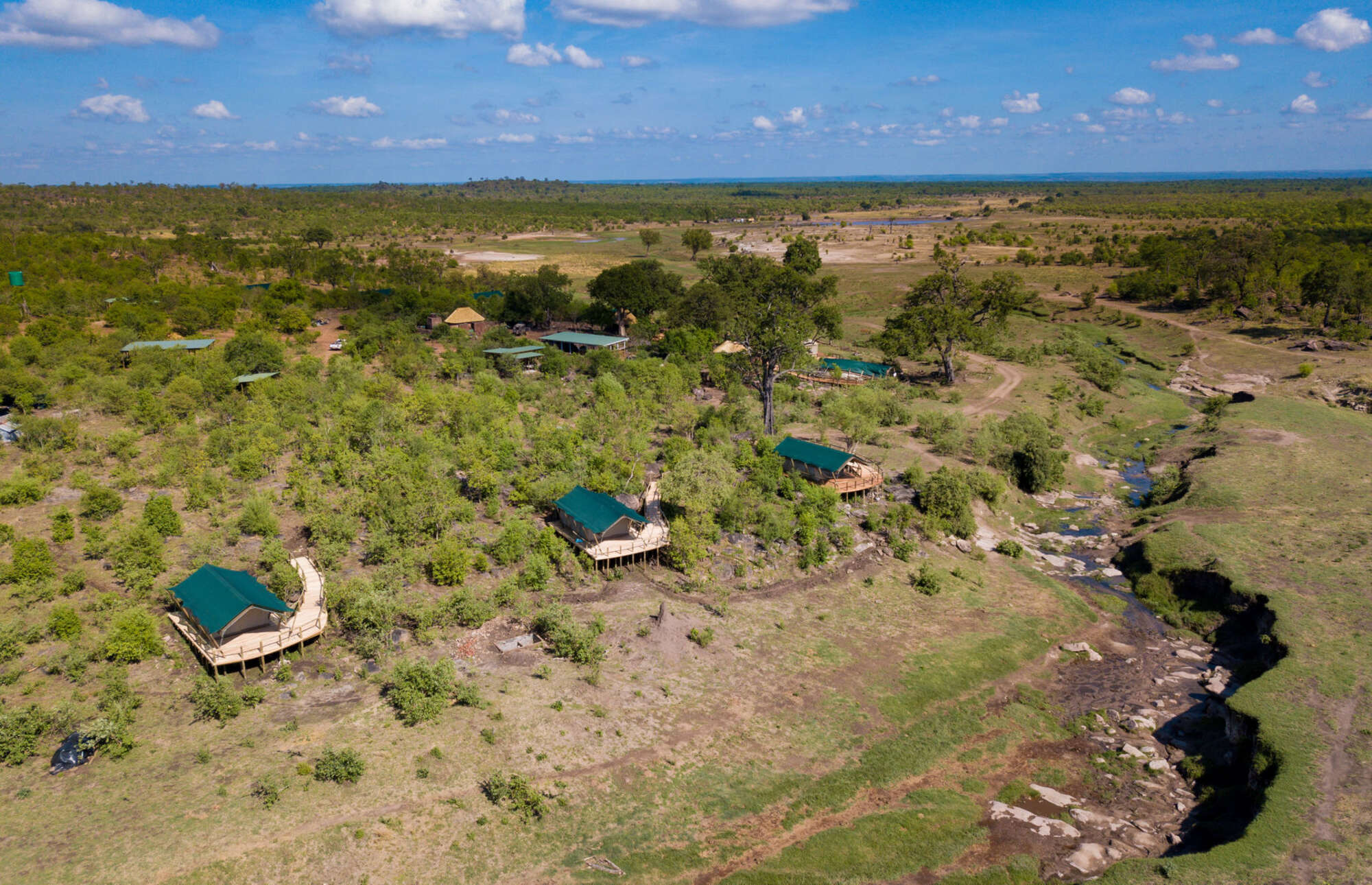
Deteema Springs Camp
In the remote north-west of Hwange National Park, Deteema Springs is a well-designed but unpretentious tented camp that offers good service and excellent wildlife potential.
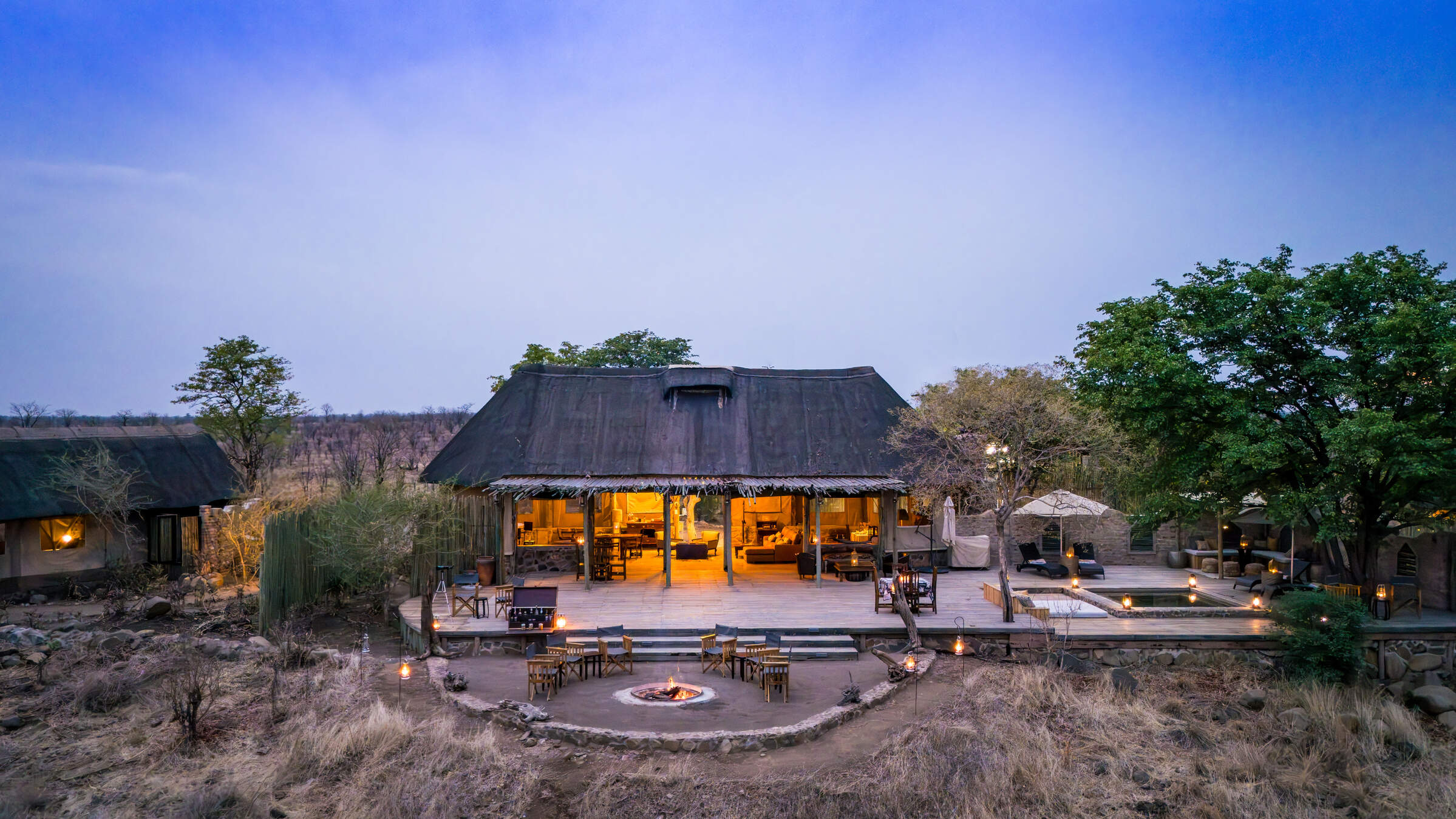
Daka Camp
One of the most remote camps in Hwange National Park, Daka Camp, like the smaller Daka Expeditions, sits almost on the border with Botswana.
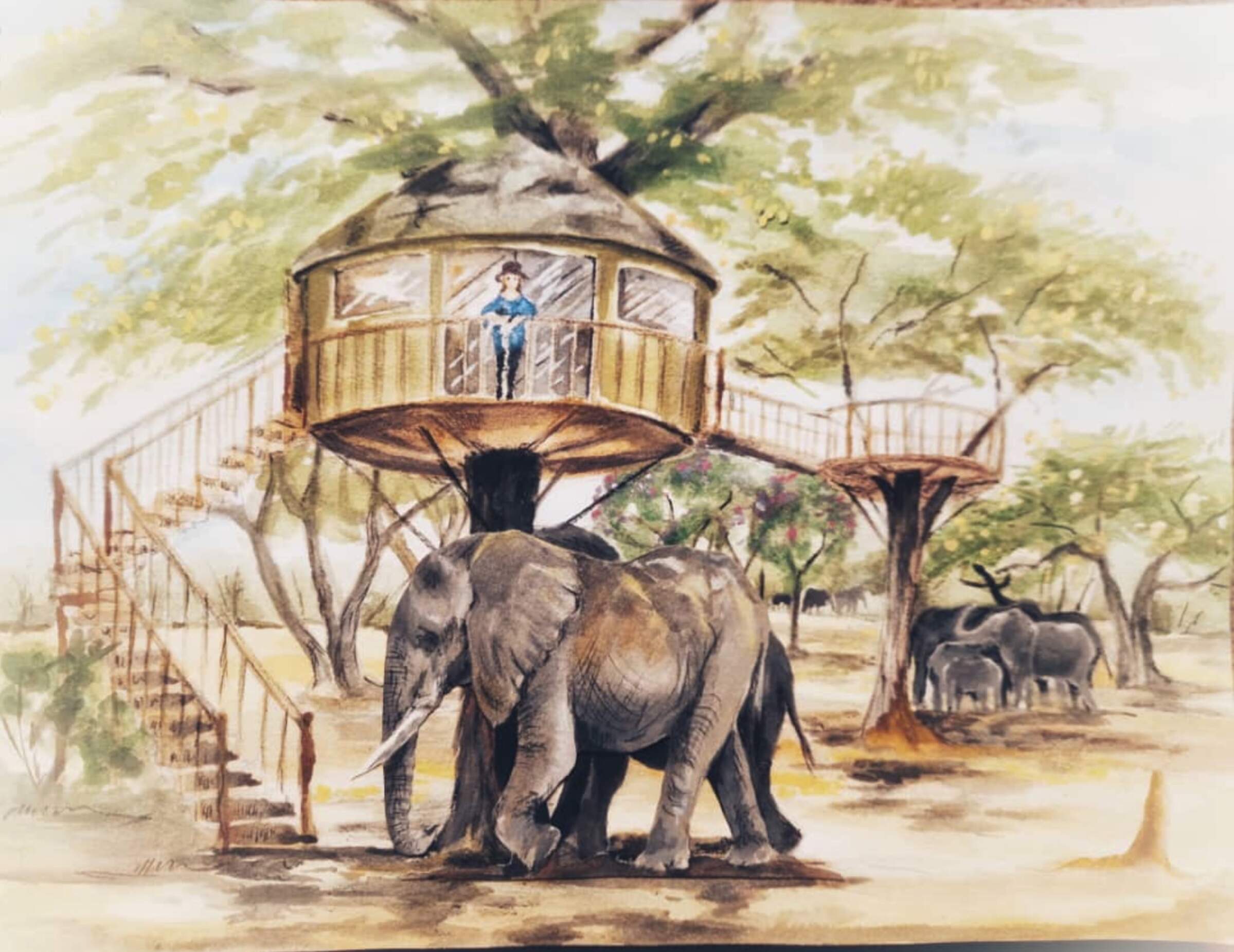
Tum Tum
The Tum Tum Treehouses are due to open in late 2025. Details on this exciting development are still scarce, so watch this space.
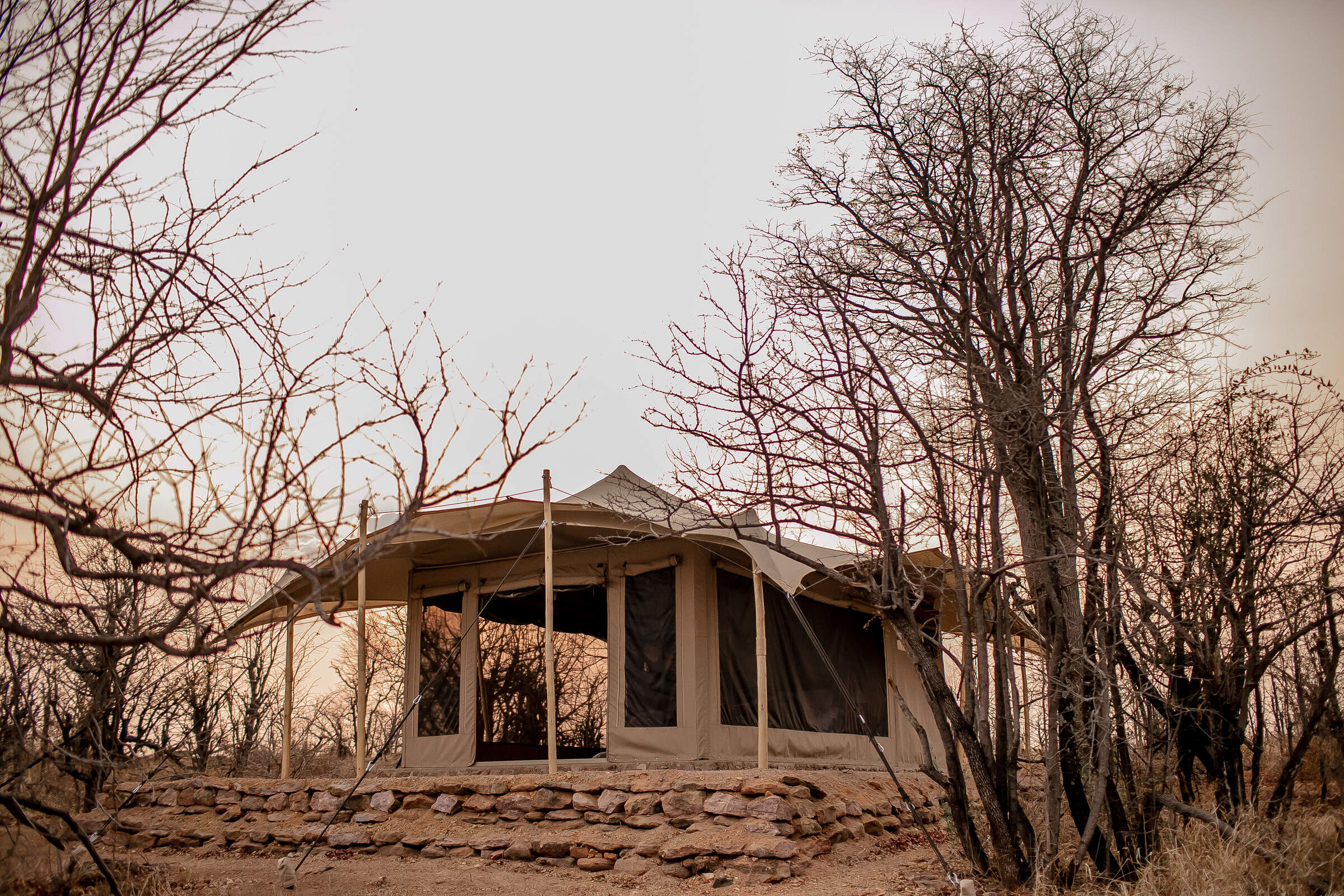
Camp Chitubu
Nestled in the rugged north of Hwange National Park, the unpretentious yet comfortable Camp Chitubu has a strong focus on excellent guiding.
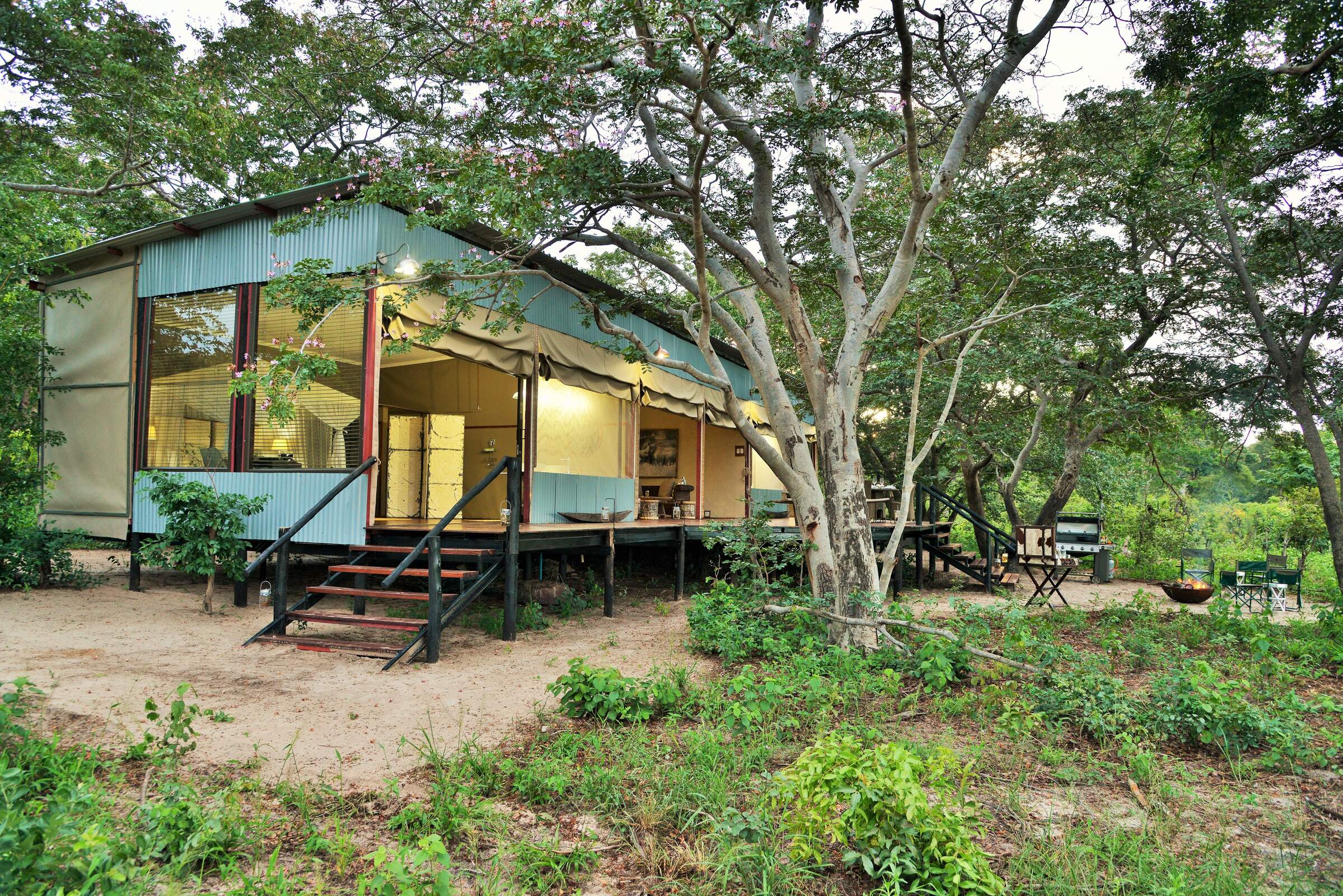
Khulu's Retreat
Just outside Hwange National Park, Khulu's Retreat is an exclusive private villa and is a great place to spoil yourself on a safari in Zimbabwe.
When to go to Hwange National Park
Our month by month guide: What it's like to visit Somalisa Camp in Hwange National Park
Jan
Feb
Mar
Apr
May
Jun
Jul
Aug
Sep
Oct
Nov
Dec
Zimbabwe in January
January falls in the middle of Zimbabwe’s rainy season and is the wettest month of the year. Heavy rainfall occurs most days, flooding seasonal rivers and waterholes, with the occasional sunny spell.
With the high levels of precipitation the wildlife in the national parks becomes widely dispersed, taking advantage of the abundance of food and water, and is easily hidden by the thick, green bush.
While sightings of larger animals are possible, and many species drop their young at this time, game viewing is often sparse. However, many migratory species of bird arrive in Zimbabwe making it a peak month for birding.
The rains create incredibly sticky mud in Mana Pools National Park, preventing access and causing camps to close for the season. The majority of the camps in other parks remain open, with low rates attracting a smattering of visitors.
- Peak of the rainy season: hot & humid with heavy rain most days
- Bush exceptionally thick and green, with poor game viewing
- Species such as impala drop their young
- All camps in Mana Pools closed
- Very few visitors, and low rates at open camps
Our view
A time to avoid if possible
Weather in January
Zimbabwe in February
February remains well within Zimbabwe’s rainy season. Although total rainfall drops, relatively short thunderstorms can still be expected most afternoons. On the plus side, there is a greater chance of some sunshine in-between.
Much of the country remains waterlogged, closing access to Mana Pools and severely restricting walking safaris in other parks. While game drives and canoeing remain an option, the abundance of water disperses animals, and thick grass can make it difficult to spot larger species, but birding remains excellent. Conversely, this is a great time of year to view the landscape, and is excellent for photographers. Sporadic cloud cover and clear air can make for some spectacular sunsets too, particularly over Lake Kariba and the Zambezi River where the reflections off the water add to the beauty.
- Generally wet with frequent thunderstorms & hot humid days
- Poor wildlife viewing due to dispersed animals & thick bush
- Clear air, green landscapes & exceptional sunsets
- All camps in Mana Pools closed
- Very few visitors & low rates at camps that are open
Our view
This is not a great time to visit
Weather in February
Zimbabwe in March
March is the final month of Zimbabwe’s rainy season, when the rains start to trail off and sunny days become the norm. However, some days the clouds can still build, breaking into thunderstorms in the afternoon.
Mana Pools remains closed throughout the month but the majority of camps in Hwange, Matusadona and Gonarezhou remain open. Here, the landscape is green and alive, with migrant species of birds taking advantage of the abundant insect life. Larger animals remain elusive though, and walking safaris remain restricted.
By this time of year, the rains have normally trickled down to the Zambezi River and the flow of water over the Victoria Falls starts to increase, but without kicking up too much spray to obscure the views.
- Last month of the rainy season: hot, humid days with occasional storms
- Lush vegetation means good birding, but poor game viewing
- Views of the Victoria Falls improve
- All camps in Mana Pools closed
- Open camps have few visitors & low rates
Our view
This is not a great time to visit
Weather in March
Zimbabwe in April
April marks the end of Zimbabwe’s rainy season and the end of summer. Clear skies are the norm, with just the occasional shower. Temperatures start to drop, failing to reach 30ºC most days and dropping down to around 10ºC at night.
As the rain fades the landscape starts to dry out. While the vegetation remains thick and green, the soil in Mana Pools dries enough for camps to open, and the only camps to remain closed are the most remote bushcamps in Hwange. Although viewing of larger animals remains tricky, the improved weather starts to draw back visitors, as do prices significantly below those in the peak season.
The Zambezi River and flow of water over the Victoria Falls is at its highest, although large amounts of spray diminish views of the waterfall itself.
- Transitional period, with much lower rainfall & falling temperatures
- Wildlife is still dispersed & hard to see, but sightings improving
- Views of the Victoria Falls often obscured by spray
- Camps in Mana Pools open
- Visitors start to return & camps increase their rates
Our view
A good time to visit, with pros & cons
Weather in April
Zimbabwe in May
The first month in the dry season, May is also Zimbabwe’s first month of winter. If the rains are particularly late in a given year, you may catch the odd shower, but you can expect clear and sunny days the majority of the time. While it’s warm in the daytime, temperatures drop to single digits at night, so bring a warm jumper and gloves for early morning drives.
With the rain having cleared the air, the sky is bright blue, and it’s the best time of year for photography.
Even the most remote camps in Zimbabwe are now open. With the lack of rainfall, vegetation dies back significantly, and seasonal rivers return to sand. Not only does this open up the possibility of walking safaris, but wildlife viewing becomes much more reliable.
- Start of the dry season, with milder days and cold nights
- Game viewing significantly improves as vegetation dies back
- Vegetation starts to turn from green to brown
- Best time for photography with crystal clear air
- Visitors start to return; all camps open & rates increasing
Our view
A very good time to visit
Weather in May
Zimbabwe in June
During June you can virtually be guaranteed of dry and sunny days, although temperatures continue to drop, and can get close to freezing at night in Hwange National Park. Jumpers, jackets and gloves are strongly recommended for early mornings and evenings.
The opportunities for wildlife viewing improve throughout the month as the landscape rapidly dries, and the animals start to gather on the banks of the Zambezi River and around Hwange’s waterholes.
Water levels in the Zambezi River start to drop, reducing the amount of spray kicked up at the Victoria Falls and greatly improving visibility, but still allowing a full curtain of water to cascade over the edge.
- Middle of winter, with night-time temperatures close to freezing
- Game viewing significantly improves throughout the month
- Views of the Victoria Falls are at their best
- Noticeable increase in visitor numbers
- Camps considerably more expensive
Our view
A very good time to visit
Weather in June
Zimbabwe in July
July sits in the middle of Zimbabwe’s dry season. Although it’s warm at midday, temperatures are generally cold and in Hwange it’s been known to drop below freezing at night, with the lower-altitude Mana Pools feeling a bit warmer.
With wildlife clustering around the few remaining waterholes, sparse vegetation, and some of the best views of the Victoria Falls, this is one of the most popular times to travel, with camps charging peak season rates to reflect this. That said, visitor numbers to the country in general remain low, and outside of the Victoria Falls it’s rare for any areas to feel crowded.
- Middle of the dry season with almost no chance of rain
- Clear sunny days, but very cold nights
- Wildlife viewing good; game drives and walking safaris unrestricted
- Views of the Victoria Falls at their best
- Camps charging peak season rates
Our view
A very good time to visit
Weather in July
Zimbabwe in August
While August is the end of winter and temperatures are starting to creep up, mornings and nights are still cold, and game drives in open vehicles can feel particularly chilly. Well into the dry season, the landscapes will have mostly transformed from green to brown and wildlife viewing in Zimbabwe’s national parks is approaching its best. Due to dust kicked up into the atmosphere and smoke from bush fires you may start to notice a haze on the horizon, but this doesn’t significantly impact photography.
August is one of the most expensive months, and the pleasant weather and decent game viewing attracts lots of visitors. While the national parks rarely feel crowded, Victoria Falls accommodation can sell out a year in advance.
- Warm, sunny days but cold mornings & nights; almost no chance of rain
- Wildlife viewing nearly at its best
- Landscape turns brown, & an atmospheric haze develops
- All camps charging peak season rates
Our view
Fantastic: the very best time to visit
Weather in August
Zimbabwe in September
Temperatures in September rarely drop below 15ºC, but are yet to reach the oppressive highs of summer. It will normally have been five months since the last drop of rain, so antelope and elephants cluster around whatever water remains, with predators never too far away.
The landscape is very brown, and the haze building on the horizon takes some of the colour out of the sky, so while animal subjects are plentiful, the background is not ideal for photography.
The combination of incredible wildlife viewing, hot and sunny weather, and cheaper flights outside of the school holidays make this the most popular time of year to travel, and availability at the camps can become limited up to a year in advance.
- The best month for weather, with a pleasantly warm temperature range
- One of the best months for game viewing
- Victoria Falls starting to dry but still impressive on Zimbabwean side
- All camps are charging peak season rates
- Most popular time to travel, & space can be limited
Our view
Fantastic: the very best time to visit
Weather in September
Zimbabwe in October
October is the last month of the dry season with little chance of rain but building humidity. While the higher elevation of Hwange National Park limits temperatures to the 30s Celsius, they can easily top 40ºC in Mana Pools.
With little vegetation or water, wildlife is drawn to the few remaining water sources and viewing is at its best; visitors who brave the heat can be rewarded with some exceptional sightings, although haze in the air diminishes photos. Maximum visibility and dense wildlife concentrations can also make for very rewarding walking safaris, although the heat can make them uncomfortable.
Water levels in the Zambezi at the Victoria Falls drop significantly, and large stretches of the waterfall are a dry cliff-face – although it never dries completely. Camp rates remain at their peak, but visitor numbers drop as people avoid the heat.
- Last month of the dry season; very hot with building humidity
- Wildlife viewing at its very best
- Dust & smoke in the air diminish photographic opportunities
- Victoria Falls starting to look very dry
- Camp rates remain at their peak
Our view
A very good time to visit
Weather in October
Zimbabwe in November
November is a transitionary period, with high temperatures and humidity. While they can’t be predicted with any precision, the first rains normally arrive halfway through the month, in the form of thunderstorms lasting a few hours each day.
Early November is a popular time to travel as the camps drop their rates, so if you’re lucky you can get peak-season game viewing at low-season rates. This is a gamble though as if the rains do arrive, animals are no longer limited to a few dangerous waterholes and will disperse into the bush. While all the camps in Mana Pools intend to remain open, the rains can make the airstrips unusable so you may find yourself moved to a different park, a risk that increases through the month.
- Typically the start of the rains in Zimbabwe
- Temperatures & humidity levels remain high
- Wildlife viewing rapidly diminishes as the rains arrive
- Camps remain open, but risk early closure in Mana Pools
- Much cheaper time to travel as camps drop their rates
Our view
A good time to visit, with pros & cons
Weather in November
Zimbabwe in December
By December the rainy season has begun in earnest; this is one of the wettest months in Zimbabwe, with heavy thunderstorms most afternoons and occasionally continuous rain for a couple of days. While temperatures start to cool down the high levels of humidity can make the heat feel more oppressive.
With the rains comes an explosion of green growth, and the dust and smoke are washed out of the air. The resulting scenery – with the occasional bright blue skies – can be fantastic for photographers. Thick vegetation and plentiful water makes viewing of larger animals tricky, but with migratory species arriving the birding is at its best.
All camps in Mana Pools and the remote Hwange camps close, with those remaining open charging their lowest rates.
- One of the wettest months in Zimbabwe
- High temperatures & levels of humidity
- Wildlife viewing poor, but birding good
- Lush green landscapes & clear air; great for landscape photography
- All camps in Mana Pools closed
Our view
This is not a great time to visit
Weather in December

Looking for inspiration on where to travel next?
Visit our trip chooser to explore your options and find inspiration for your perfect African adventure
Inspire me